
Tours, tastings, bottle shares and BBQ highlight Bourbon & Banter ’25 Summit

Most start drinking bourbon because family or friends do, but they continue drinking it because it tastes great.
Surely no one came to bourbon musing there would someday be drinkers like them; lovers of bourbon who want to see it made, meet the people who make it and then drink it with friends new and old. But that, in a nutshell, describes Bourbon Banter’s third-annual Summit. Held this year in Louisville, Ky., 21 Bourbon Banter friends gathered Oct. 22-25 to pick barrels, indulge in good food, visit distilleries and gather nightly at the Summit House (an Airbnb large enough to hold our party and distilling industry guests) to share bottles and stories.
The Summit is arguably a thankless and Sisyphian effort of organization and tedium, somehow made fun and entertaining by BourbonBanter.com founder Pops and our single-barrel pick coordinator, Brent Joseph. Months of planning, haggling and follow-up were invested in creating our most diverse Summit experience yet. Read along for a detailed look at each day of Summit 2025.
Cocktails, anyone?
Thursday, Oct. 23
If you’ve heard the Bourbon Pursuit podcast, you’ve doubtless heard of Pursuit Spirits, the terrific bourbon and rye blending NDP created by Kenny Coleman and Ryan Cecil. Thinking (perhaps unwisely) that our group needed to start tippling at 3 p.m., the enterprising duo invited us to a meet-and-greet at their new visitor experience, Pursuit Spirits on Whiskey Row, in downtown Louisville. The new joint is lovely and features the basement lounge, Trial & Error. With its dim lighting and stylish design, it's got that nice speakeasy vibe, but with plenty of space for folks to gather and linger while enjoying a large variety of expertly crafted cocktails, wines, beers, and over 100+ expressions from Pursuit Spirits. The tour culminated with our group in the lounge for a tasting session of several of their innovative spirits led by Kenny and Ryan, including an experimental high-proof rum that was voted a crowd favorite.


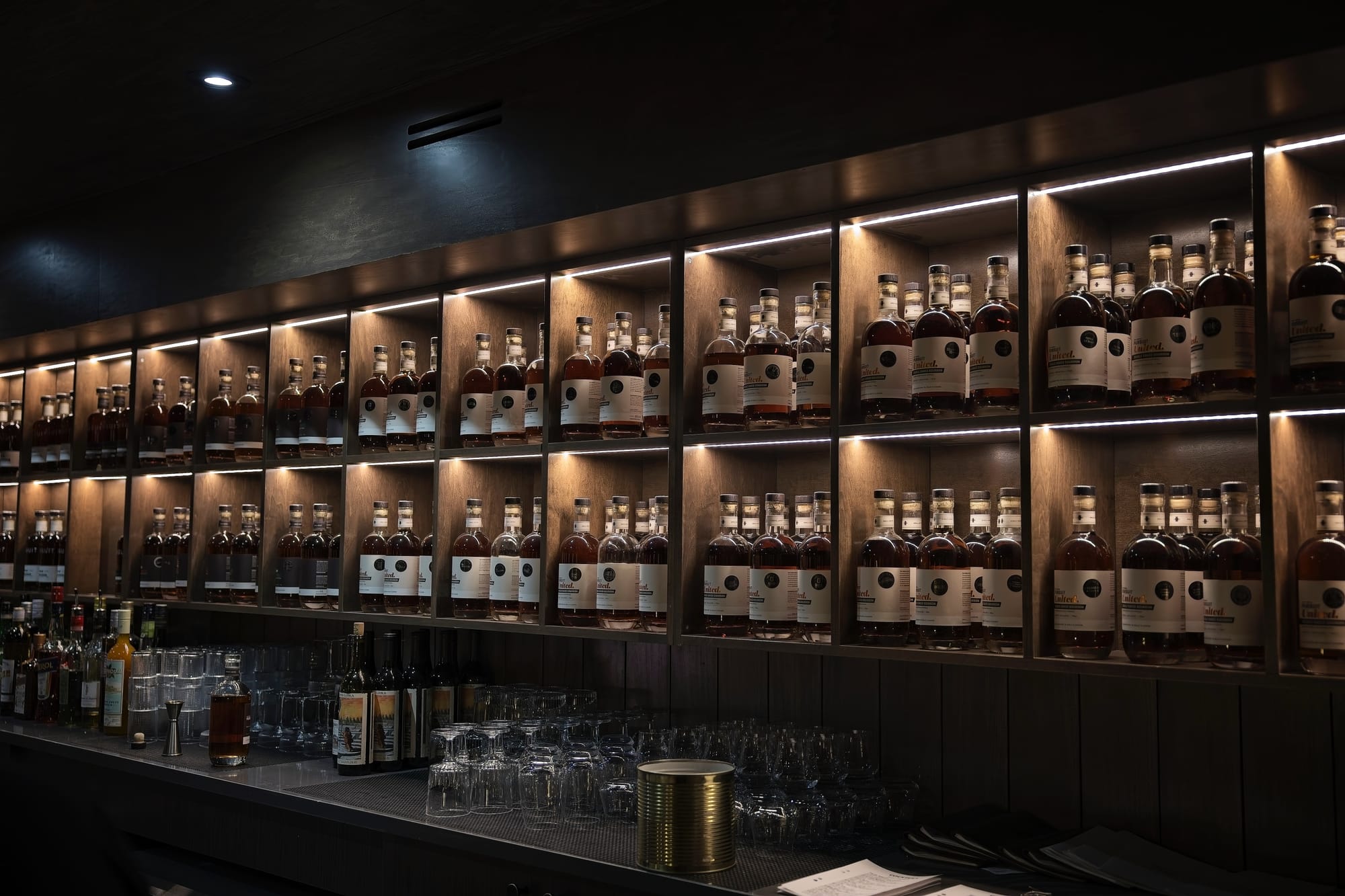

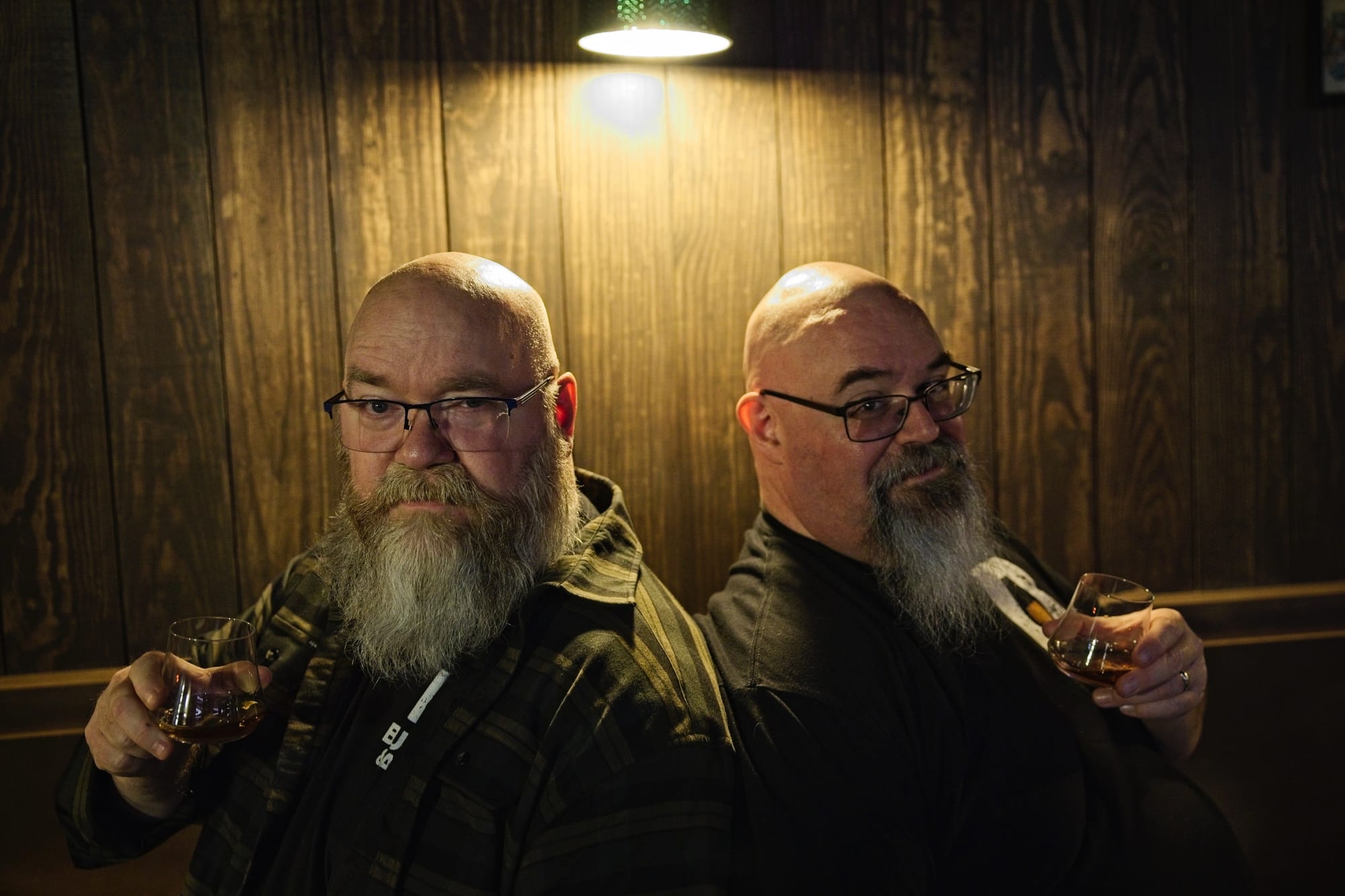

To further capitalize on the loyal community Bourbon Pursuit has built through its podcast, Kenny and Ryan built a custom-designed podcast studio within sight of the Trial & Error lounge, allowing patrons to watch the podcast being recorded. Perhaps fueled by a bit of whiskey and studio jealousy, Pops and Bob stormed the podcast studio for a brief, but mighty hostile takeover.
While the "takeover" was all done in good fun, it might just lead to the bourbon podcast collaboration the world didn't know it needed.
Following two hours of liquid amusement there, our group walked a short distance to the Green River Tasting Room, also on Whiskey Row. There, GR national brand ambassador, Caryn Wells, treated us to a welcome cocktail, a tour of the space (opened earlier this year), which includes a hidden speakeasy stop that includes a fill-your-own-bottle experience. The pre-Prohibition-looking bottles used for the experience are made from porcelain and will look snazzy on a home bar.

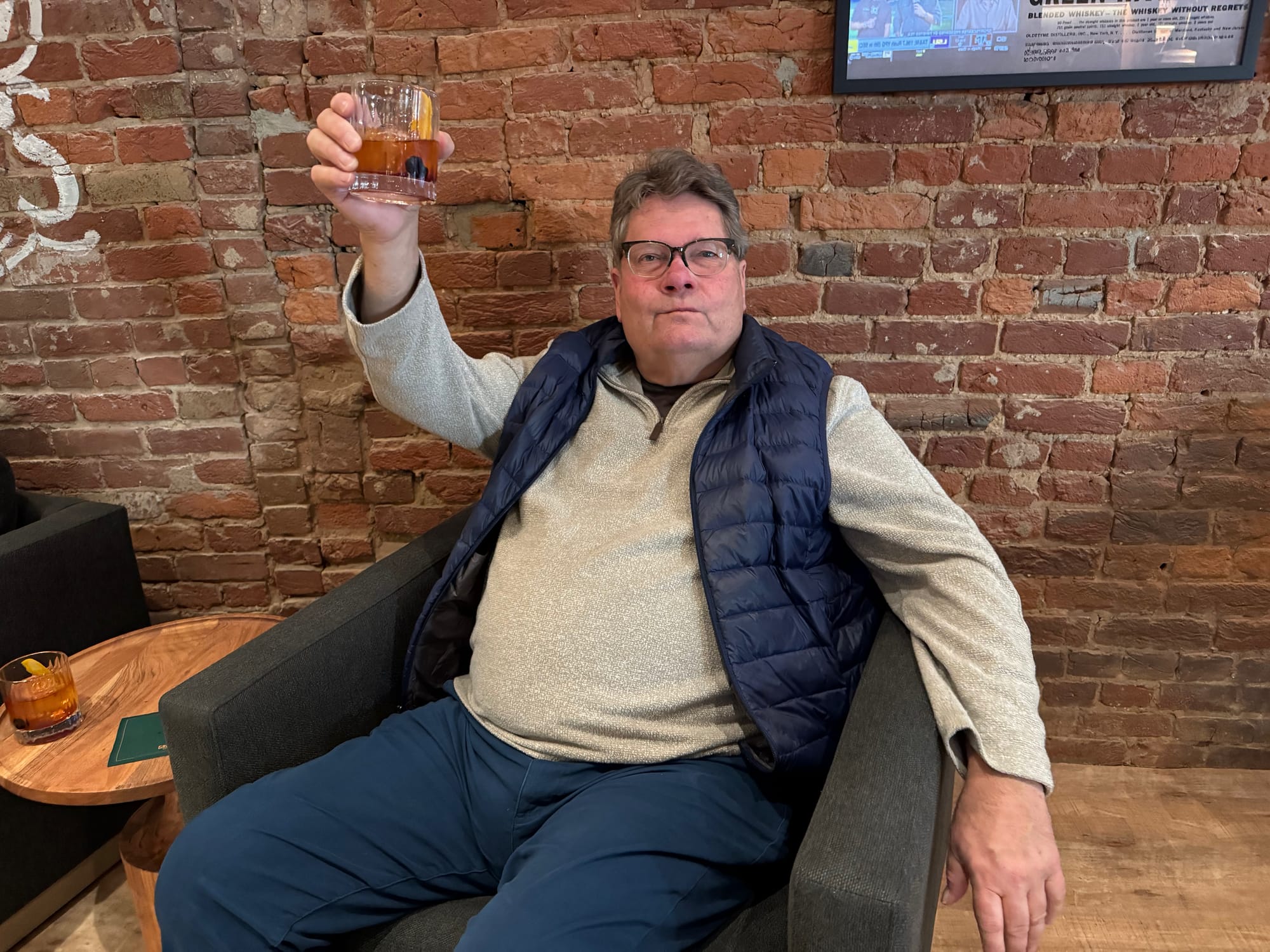

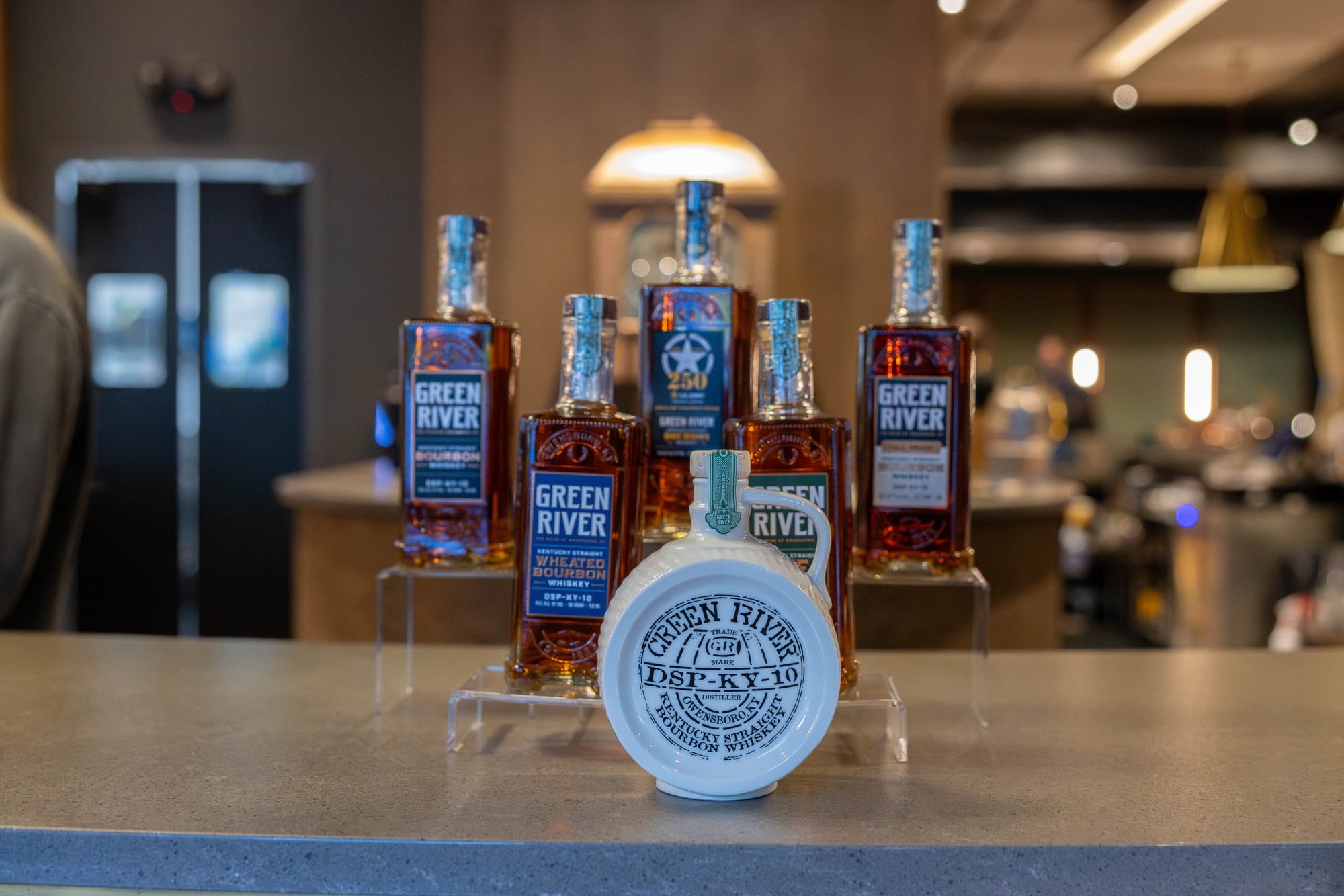
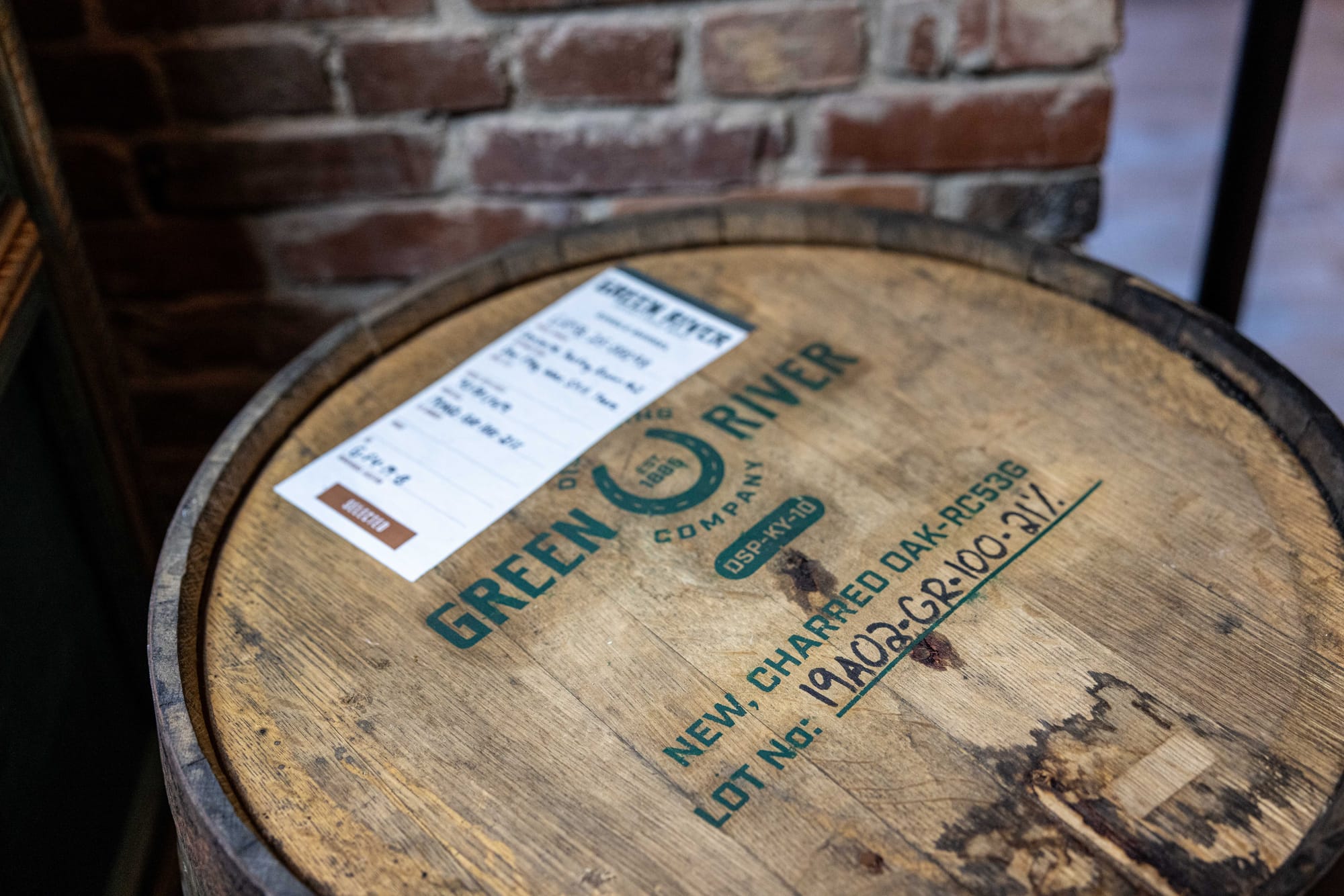
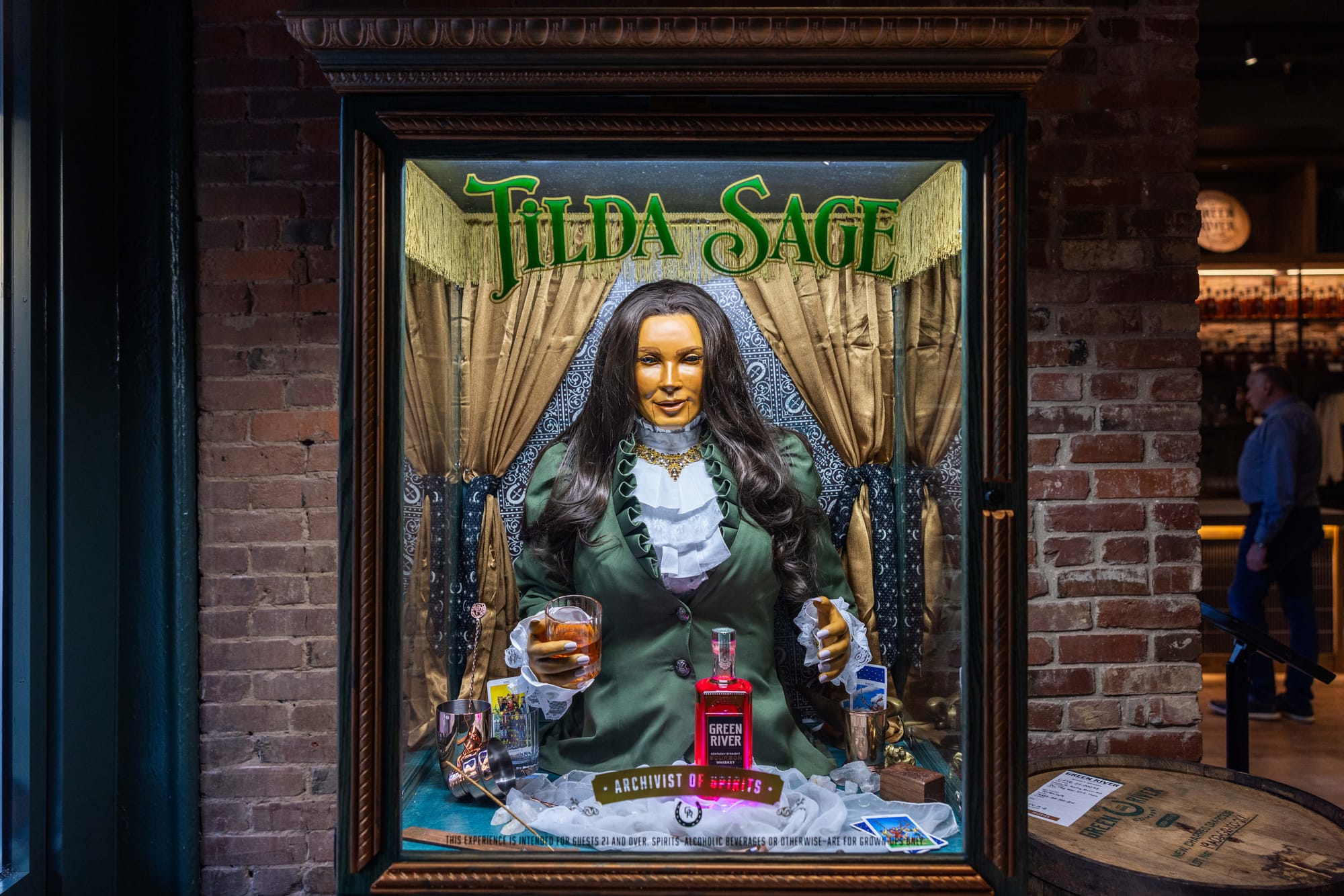
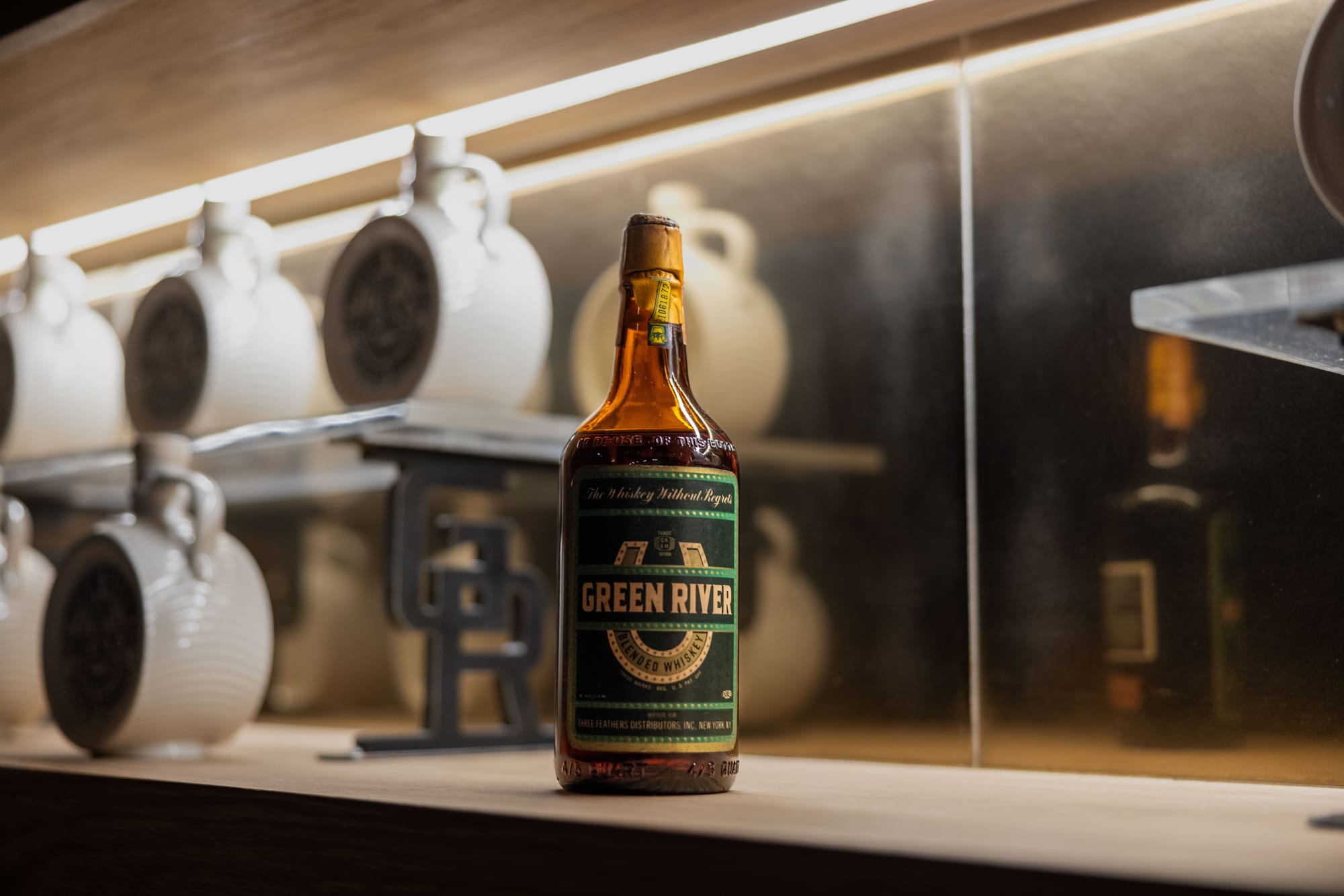
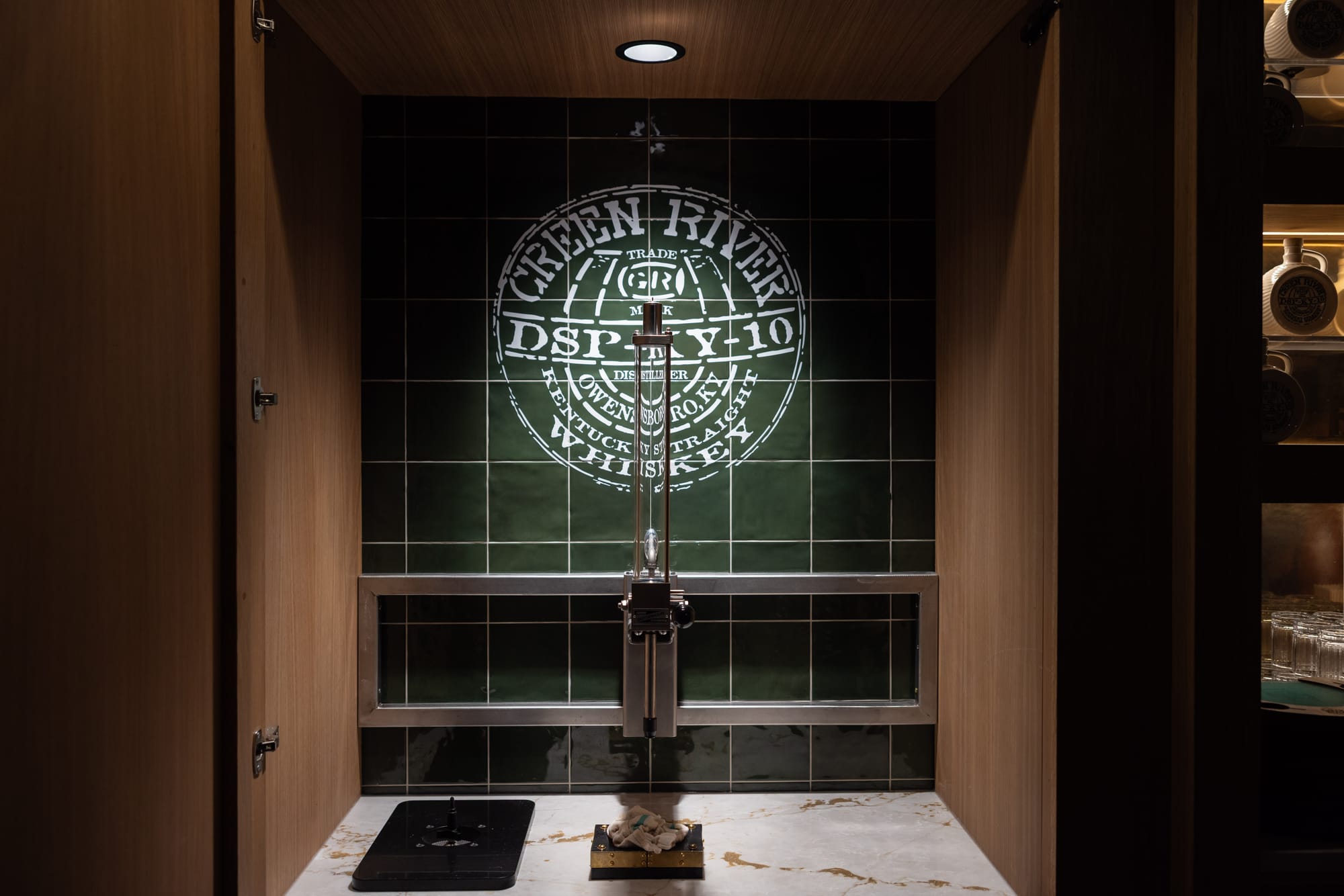
We were lined up to pick a single barrel with Green River, but since the time required to get to its Owensboro, Ky., distillery and back made that impossible, GR hosted us for the pick and a fantastic dinner at Doc Crow's Southern Smokehouse and Raw Bar, a great restaurant a few blocks away in the heart of Whiskey Row. There, Wells led us through samples of three GR barrels.
Though the traditional Bourbon & Banter barrel sampling approach centers on near-monastic silence (not for seriousness or even focus, but just to get the job done quickly and smoothly), the quiet didn’t last long. It was a large, well-lubricated group, and things got a bit chaotic, but it was fun.
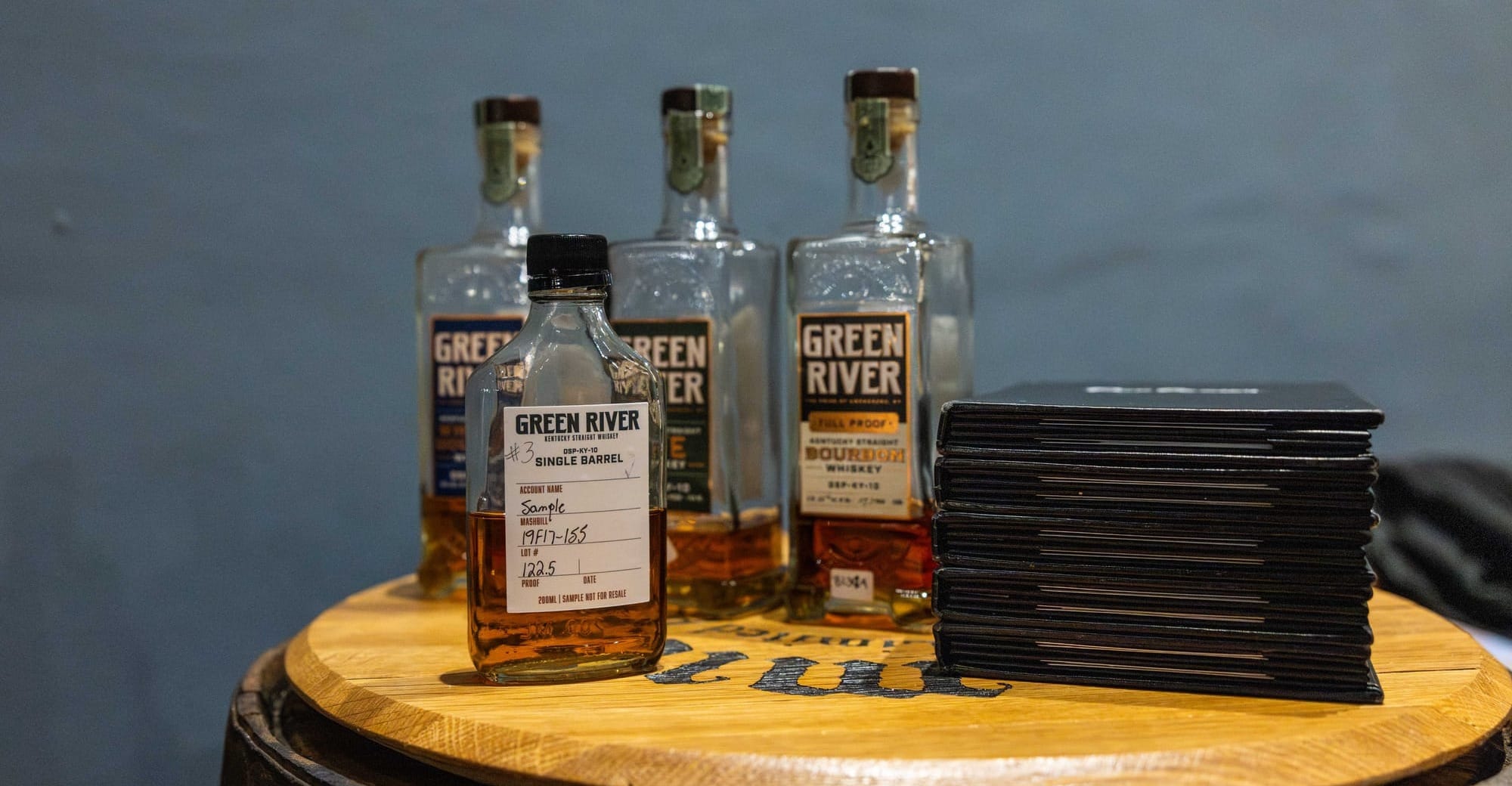
After all samples were tasted and attendees voted for their favorites, one particular cask took the lead. But as some key members debated for other options, an engaging discussion ensued before a final decision—that everyone agreed on—was excellent.
Biscuit Belly, Bright and Early!
Friday, October 24
This was the first year we’ve hired a private bus and driver to take us to meals and distilleries, and all agreed it was a wise move. Knowing we’d be day drinking—as in a 10 a.m. tasting—we set off at 6:45 a.m. to fill our stomachs at Biscuit Belly, a small Louisville-based chain centered on biscuit sandwiches that aren’t eaten with hands. Disassembling such mounds of caloric madness and flavor goodness requires forks, knives and napkins.

With breakfast on board, we boarded the bus and turned southwest for our first stop at Whiskey House of Kentucky in Elizabethtown. “E-Town,” as locals call it, is an interstate highway pivot point toward Kentucky Bourbon Trail destinations in Louisville, Bardstown, Loretto and Springfield.
Whiskey House of Kentucky is a contract distillery, meaning it makes whiskey for others only. It also has no visitor experience, so fortunately for us, co-founder, president and COO, John Hargrove was happy to give us a private tour. (Ours is a well-connected group that gets great behind-the-scenes access for the Summit. Join us next year to enjoy this kind of access!)
Since most in our group has visited distilleries all over the world—most of them historic and a bit worn around the edges—WHK’s clinically clean sterility was striking. Before becoming master distiller at Barton 1792 Distillery several years ago, Hargrove worked for years in advanced food manufacturing, which gave him invaluable experience that proved vital to making this distillery the most efficient and technologically advanced anywhere.
As Hargrove explained, AI constantly monitors every process specific to WHK’s dozens of client mash bills and production preferences and learns continually by gathering data 24-7. AI, he said, spots problems quicker and guides the computerized system to correct process anomalies that human distillery workers might not even notice. In designing the facility, he also included mechanical redundancies to quickly overcome any failures such as pumps and grain mills.

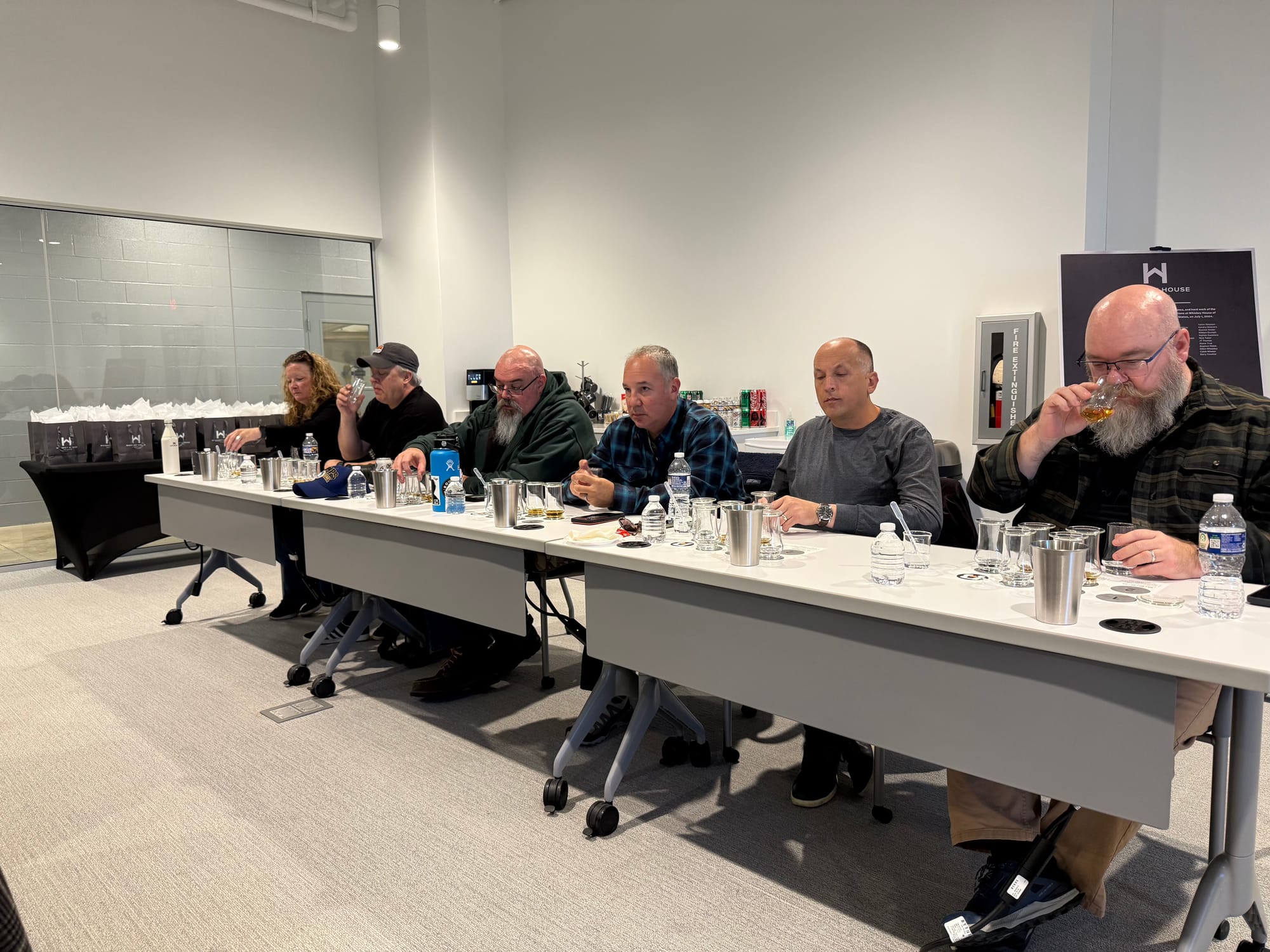



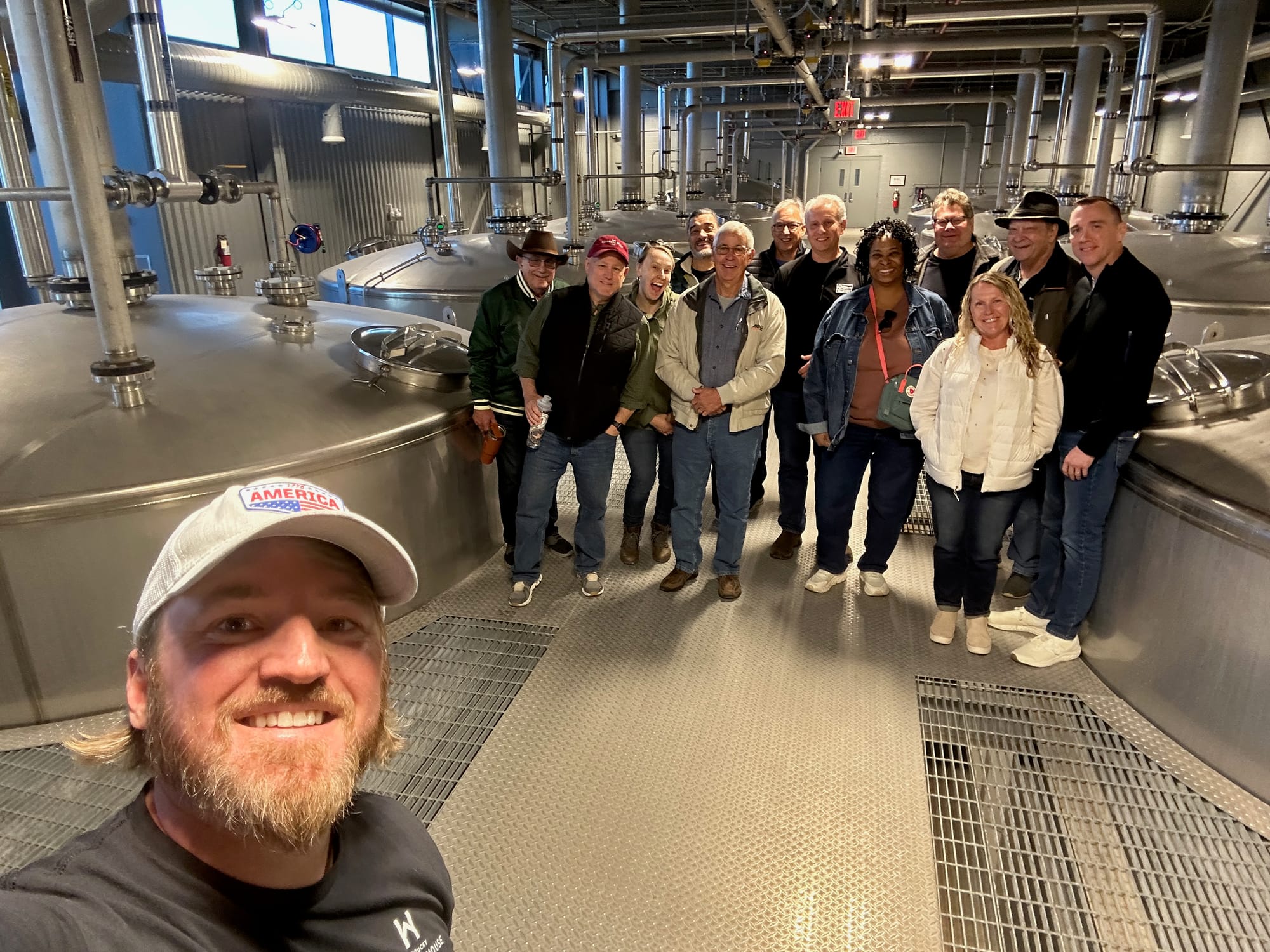

The future of whiskey production at Whiskey House of Kentucky
Sufficiently impressed with WKH’s inner workings, we then tasted four of its distillates and three maturates ranging in age from 9 to 11 months old. Many in the group commented that every distillate sample was super flavorful and amazingly clean. (If you’ve never toured a distillery and sampled distillate, it’s commonly rough, grainy, unappealing and worthy of the sobriquet “white dog.”) Hargrove attributed those attributes to WHK’s high tech systems and equally advanced quality control lab.
And at just 9 to 11 months, the three maturates we tasted made clear WKY is well on its way to creating incredible whiskies for its clients. As of our visit, there were more than 100,000 barrels aging in its rickhouses.
“The 9- and 11-month (maturate) samples we got to try were some of the best young whiskeys I've ever had in my career,” Pops said. “The future looks bright for what they're doing, and I hope the whiskey, as it continues to age, will be just as good and will also be unique from brand to brand.”
Wowed by our first stop, we boarded the bus, conducted a Pops-mandated head count to confirm everyone was aboard (one must be watchful on tours including alcohol), and headed from Elizabethtown to lunch at Bardstown Bourbon Company’s Kitchen & Bar.
A Pro Tip for Meals: If chartering a bus for traveling the Kentucky Bourbon Trail, work ahead of time with restaurants like this one to be ready for your group when it arrives. Allow them to create a limited and set menu, have your group place orders in advance and pay ahead of time (payment methods made differ with each place). To leave our bus, walk directly to our set table, have servers match us with our pre-ordered lunch, eat, drink and get back to the bus, was an amazing benefit of this trip.
A nod to BBC’s restaurant: Many in our group have visited on multiple occasions gave the same feedback: The food and service are always great, the room is gorgeous, and if you do have the time, get a drink from its amazing bar. And if you’re really feeling “spendy,” visit its private Whiskey Library and choose a special pour.
Next stop, Springfield, Ky., and Potter Jane
With bellies full and palates primed by the first whiskey sampling and a surprise whiskey pour at lunch (thanks, Erin Petrey), we rode 30 minutes to Springfield, Ky., to visit Potter Jane Distilling Co.
Nerdy Info: PJDC is in a new industrial park that’s also home to the Willett family’s new distillery, and multiple large, heat-cycled rickhouses owned by Michter’s. That all lie within less a half mile of each other and in sight of each other—depending where you’re standing—is unique in modern distilling. So, why did they do it? The opportunity to do greenfield construction with underground utilities already in place was too good to pass up. Back to the story …
Brand co-owner and master distiller, Denny Potter, was on vacation when we arrived, so cofounder and head blender, Jane Bowie, stepped up to lead the tour solo, which is has never been a problem for the loquacious and energetic former Maker’s Mark European brand ambassador. If you don’t know Bowie, she was the head of blending and oversaw special projects at Maker’s before leaving to create Potter Jane. Potter was master distiller at Maker's when he quit what he routinely calls “leaving the best and safest jobs in American whiskey to go deeply into debt doing our own thing.”
Though modern by any standard, Potter Jane, as Bowie pointed out, “doesn’t have the cool tech stuff John (Hargrove) has. We’re much more hands on here, and we put no less focus on making great whiskey.” Potter designed the distillery and its processes to move in one direction only throughout the rectangular building. In an unrelated interview earlier that week, he said every distillery he’d worked at in the past (including Jim Beam, Heaven Hill Bernheim, Cruzan Rum) had been reconfigured decade after decade to accommodate higher demand and new growth. “It’s just great to have a place that hasn’t been reworked. The flow here is great.”
Bowie said her and Potter’s vision for Potter Jane began with several questions: “What made bourbon so good decades ago? … What made us want to drink bourbon when we first fell in love with it? … We wanted to figure out what has been done differently … and to roll it back in time to create whiskey with more soul and arguably more flavor.”
Part of achieving that aim depends upon the use of a one-of-a-kind distillation system that allows the distiller to steer new make to a thumper or doubler once it exits the 36-inch column still. How each device refines the new make is evident in the final flavor and proof of each.




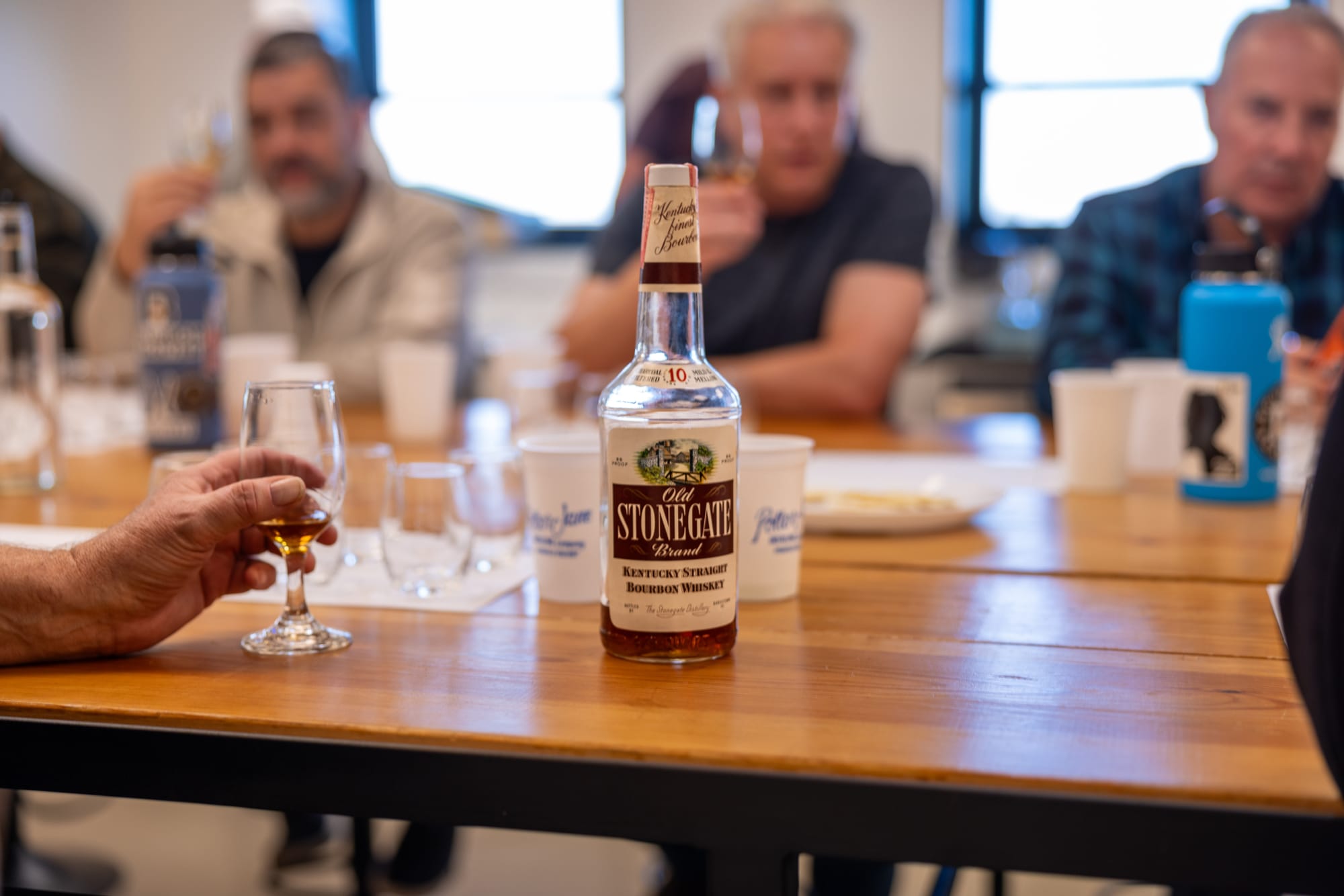

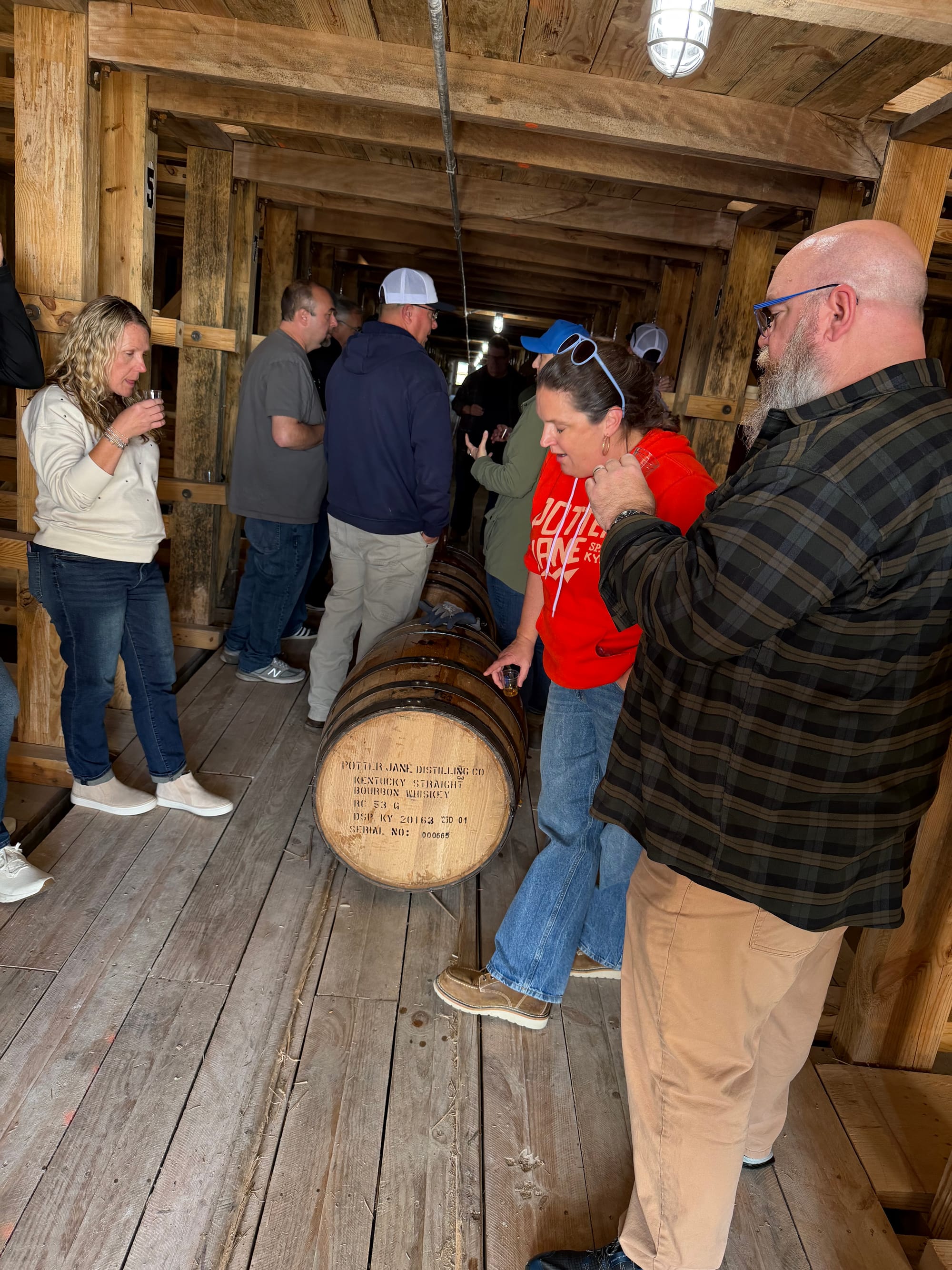

Exploring Potter Jane's vision for bringing the soul back to bourbon.
Since, like Whiskey House Kentucky, Potter Jane is too new to have bottled whiskies to taste, we sampled six distillates from a wheated bourbon mash bill, a rye bourbon mash bill and a rye whiskey mash bill. The lowest in proof was 128.8, while the highest was 136.4. All were remarkably delicious and none drank as hot as their proofs suggested. Tasting only great distillate twice in the same day was a new experience for all of us.
For a farewell toast, and to reinforce her and Potter’s mission to make whiskey that tastes of yore, Bowie poured sips of Old Stonegate Bourbon, a 10-year-old spirit made in the 1960s by Heaven Hill Springs Distillery. It was, of course, dustylicious.
Having fun with our group and being naturally disinclined to stop anyone’s fun, Bowie asked if we wanted to go to a rickhouse to taste some young maturate from the barrel. Well, ma’am, of course, we do, and so we climbed back onto the bus for the short drive. To get that kind of VIP treatment at another distillery that doesn’t have a visitor experience is exceptional.
Please, Feed Us Barbecue!
Since whiskey makes most people hungry, our wise hosts brought a large box of snacks to keep the wolves from baying on the nearly two-hour return to the Summit house. Like parents promising kids there will be ice cream at the end of a long road trip, we kept reminding ourselves that Mercenary BBQ awaited us for dinner.
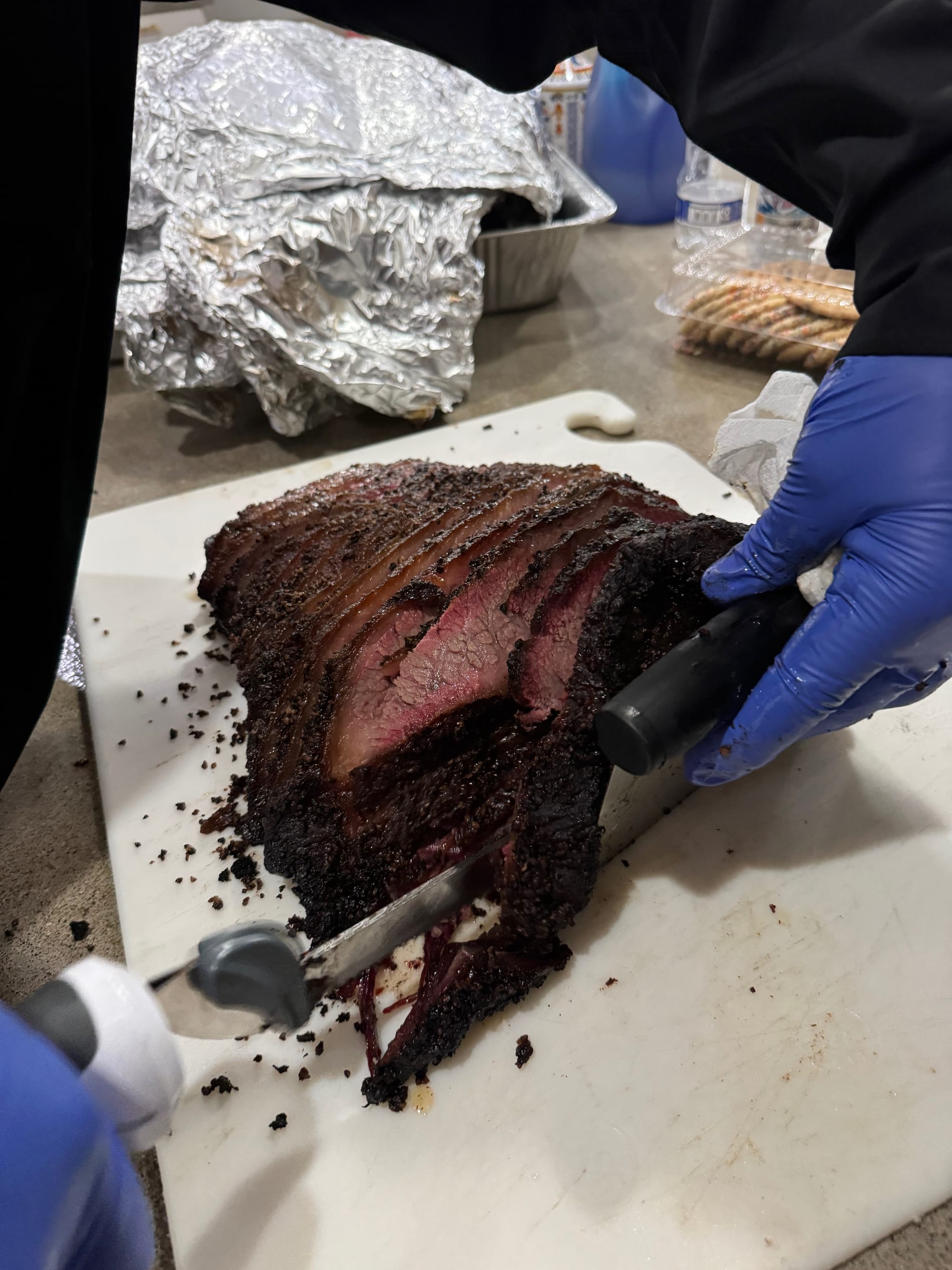

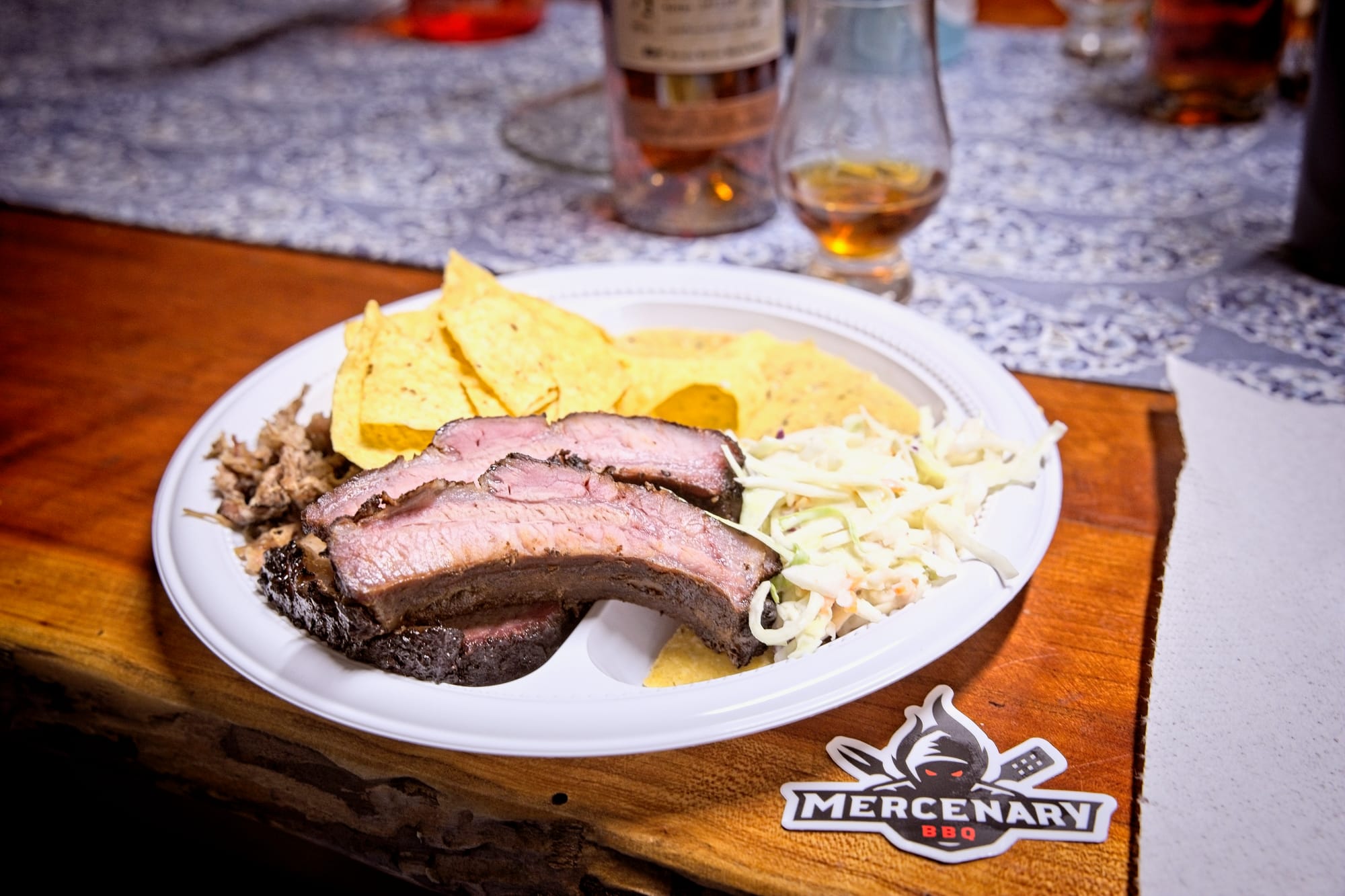
Brent’s BBQ Tip: Several in our group smoke meats at home, so we’re regularly plying Brent for advice, and he’s amazingly generous with tips such as this: To best incorporate the flavors of smoke and the rub of your choice, let the meat cool completely, wrap it in foil and refrigerate it overnight. When you reheat it slowly in the oven the next day, those flavors will have compounded and you’ll get a better product. Trust all of us, this is true.
Unfortunately for Brent, the oven at our Airbnb wouldn’t heat higher than 175 F, which kept pushing dinnertime forward. Thankfully, he gamely whipped up a spicy nacho dip to stave off our shared hunger. In the meantime, we did our best to stay out of his way by making numerous visits to the bottle share station. There, 100+ bottles brought by attendees for sampling, were being shared and reviewed on the fly.
Editorial comment: We love distillery visits, but bottle shares are our favorite times because of new friendships made and old ones renewed. It’s bourbon culture at its best.
Eventually, brisket, ribs and slaw were served, and practically on cue, our special industry guests started showing up. Among them were Stephen Fante of Limestone Branch Distillery, Jon Newton and Chrissy Martin of Castle & Key Distillery, Bernie Luebbers of Heaven Hill, Bill Straub of Four Gate Whiskey, Rachel Herb of The Ingram Distillery and more.
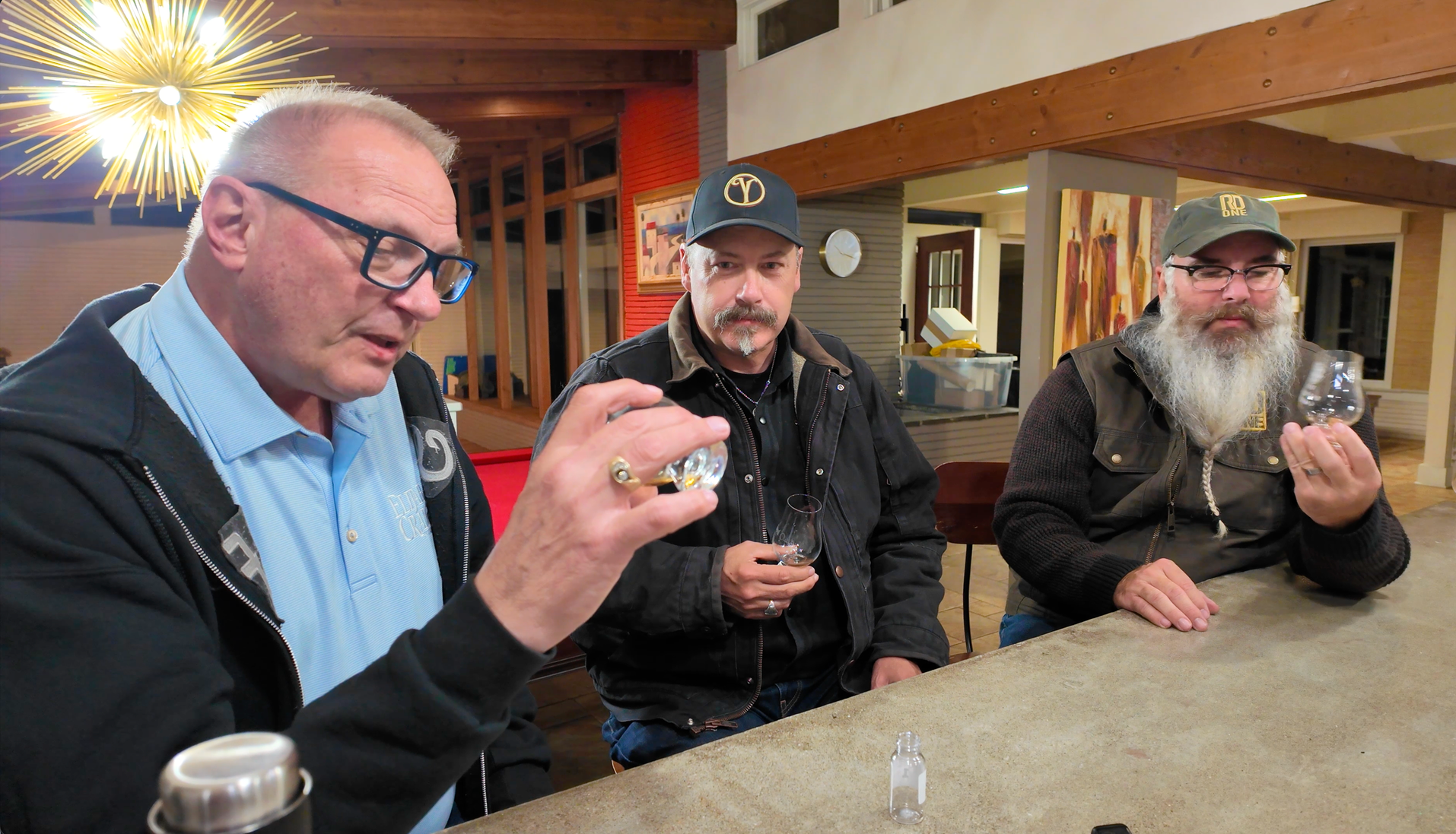
As the bourbon flowed and stories were told, some moved outside to share cigars, some watched the World Series and others skulked off to bed at nearby hotels knowing that Saturday morning was not far away.
Dark Arts, RD1 and a Flashlight Tour at Glenns Creek
Saturday, October 25.
The group rolled out at the relaxed time of 8 a.m. for the hour-long drive to Lexington and our first stop at Dark Arts Whiskey House. The specialty whiskey blending and finishing company opened just this year at its current space and offers curated whiskey tastings for curious drinkers.
To streamline our tasting, the group was divided into two groups. One tasted DA’s Core Lineup while the other group sampled single barrels. From 15 single barrel options, members could sample four, and if they found one or more worth buying, they got to thieve that whiskey and to fill their own bottles for an additional charge. The groups then flipped spaces before enjoying another separate tasting of multiple finished whiskies made by the Dark Arts team.
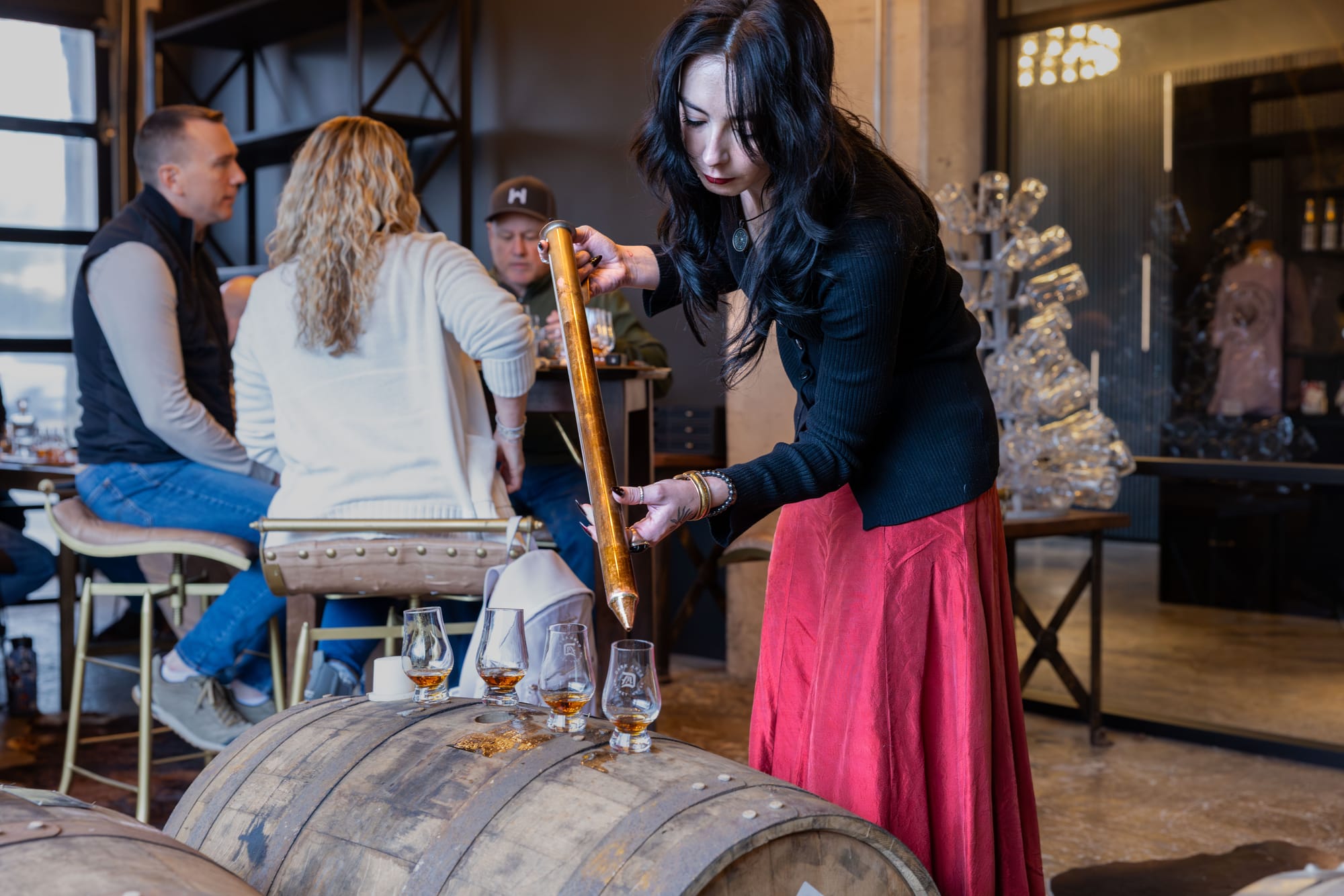


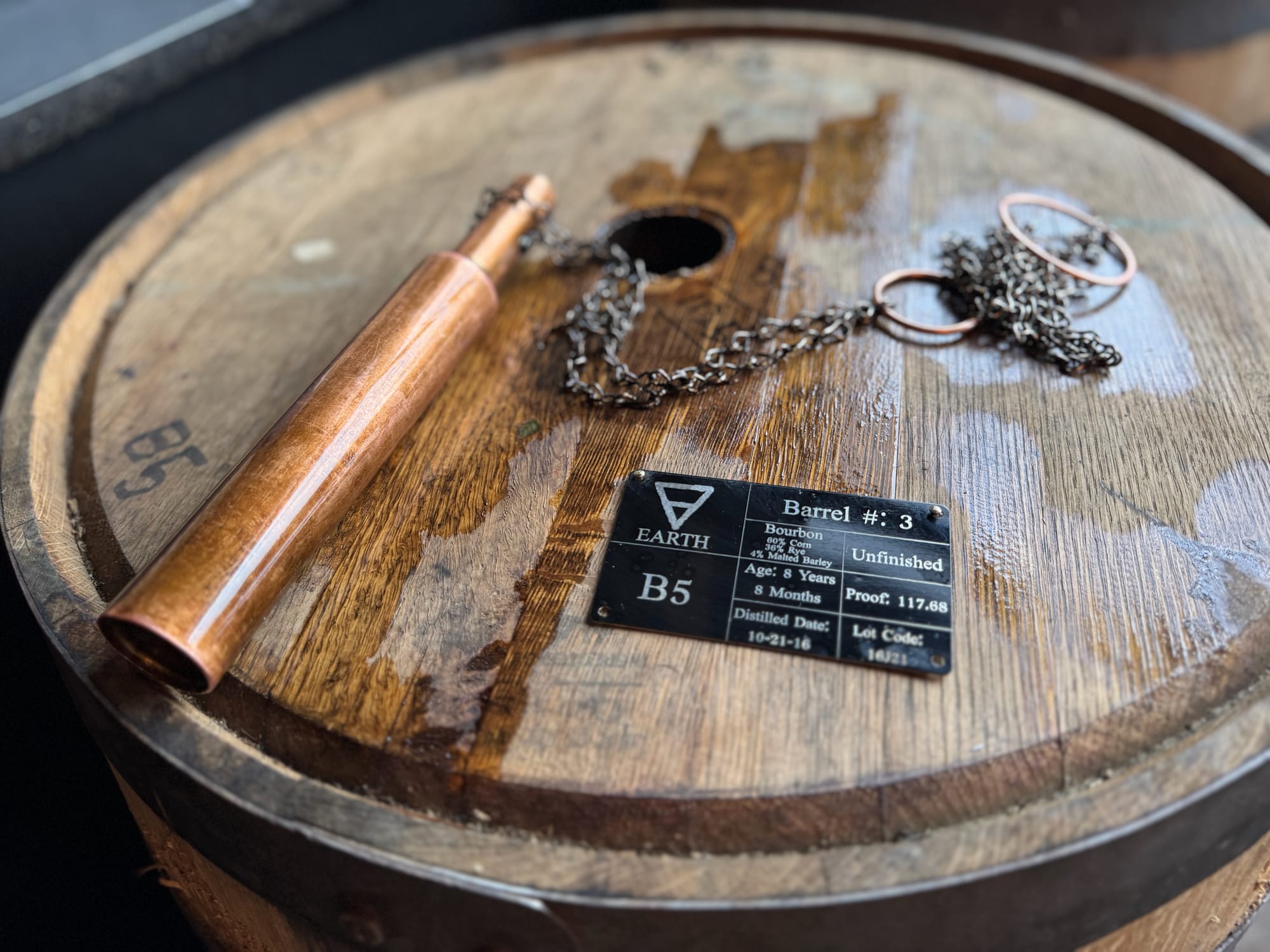
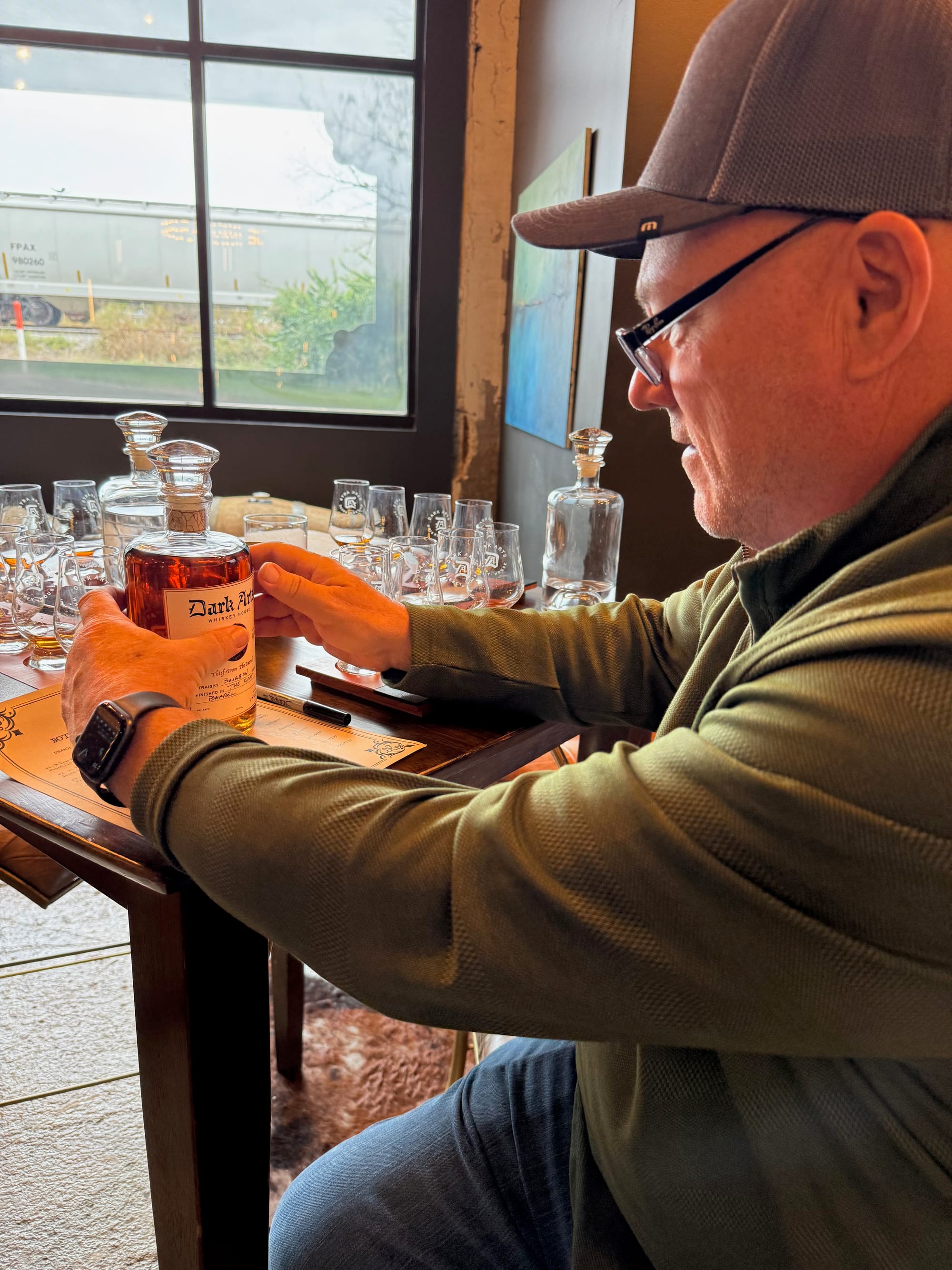

Experiencing some bourbon alchemy at Dark Arts.
The Dark Arts space earned widespread praise for its design and uniqueness. But the group also agreed that it was a bit expensive, depending on what you purchased. Regardless, it was a fun experience.
With the day’s first whiskey tasting behind us, it was time for lunch. We chose Bourbon & Toulouse, a longstanding Lexington favorite featuring a quick-casual Cajun and Creole dishes spiced up by an eye-watering lineup of more than two dozen hot sauce options.
It’s About the Wood at RD1
Re-energized by plates of Louisiana vittles, we boarded the bus for the short drive to RD1 Distillery. (FWIW, RD1 stands for registered distillery #1, which, in 1865, designated Lexington’s Ashland Distillery as the first federally licensed distillery in the U.S. RD1’s first visitor center was established near the site of that first distillery, hence the clever name.) Only five years old, RD1 has grown quickly as a non-distilling producer. Just this year, it opened a stunning visitor center in Lexington’s Commons center, a site whose modern aesthetic complements its team’s views on whiskey: highly malleable using unique wood finishes (oaks such as French, amburana and mizurnara), and other wood staves such as apple and maple.
Recently appointed research and development master distiller Jarrad Gollihue spoke at length about wood science and its application to RD1’s extensive list of releases. Hinting that there is more creativity in the works, Gollihue then led us through a tasting of four unique expressions. While some in our group aren’t fans of finished whiskies, others really liked RD1’s take on this ever-expanding spirits niche.
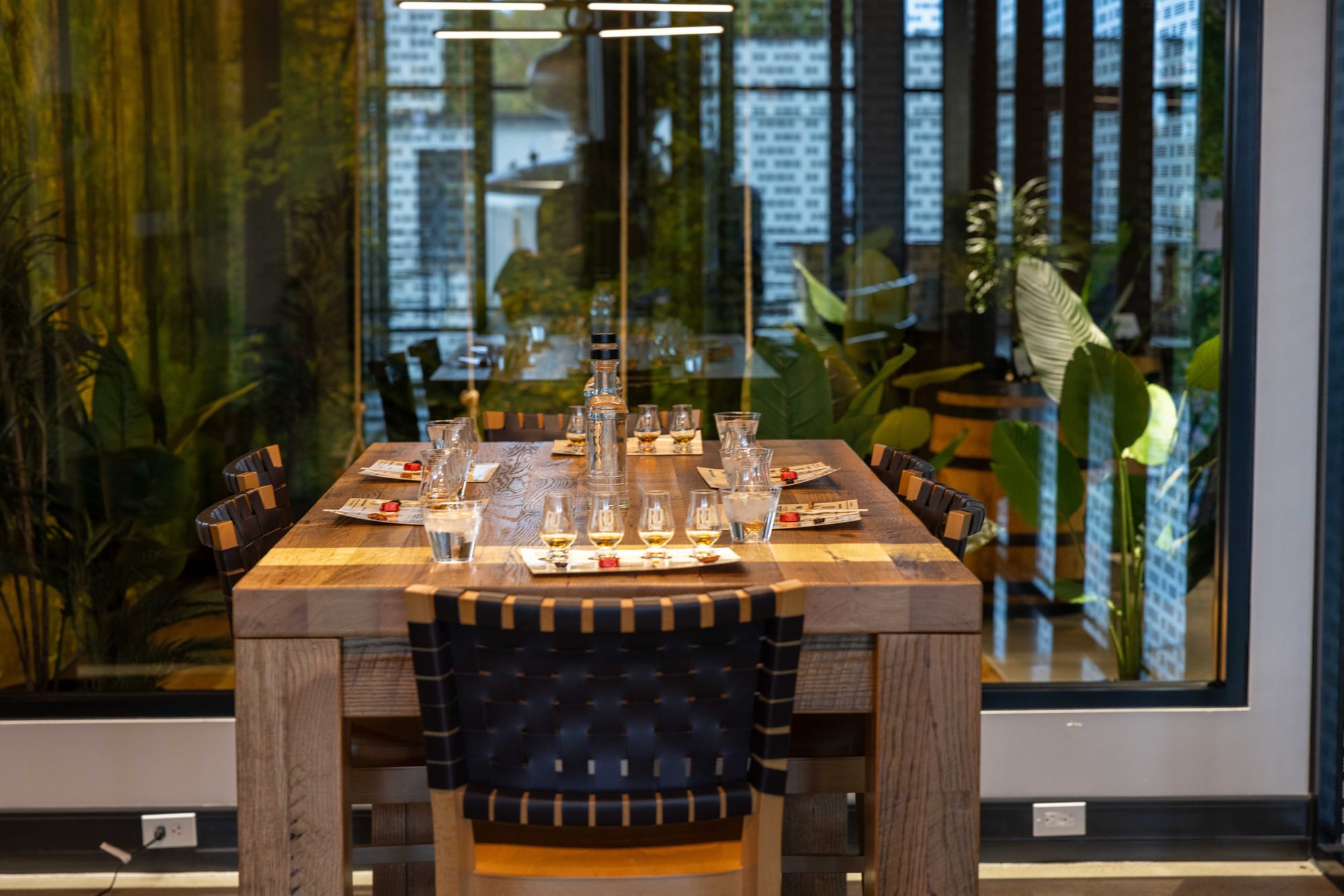

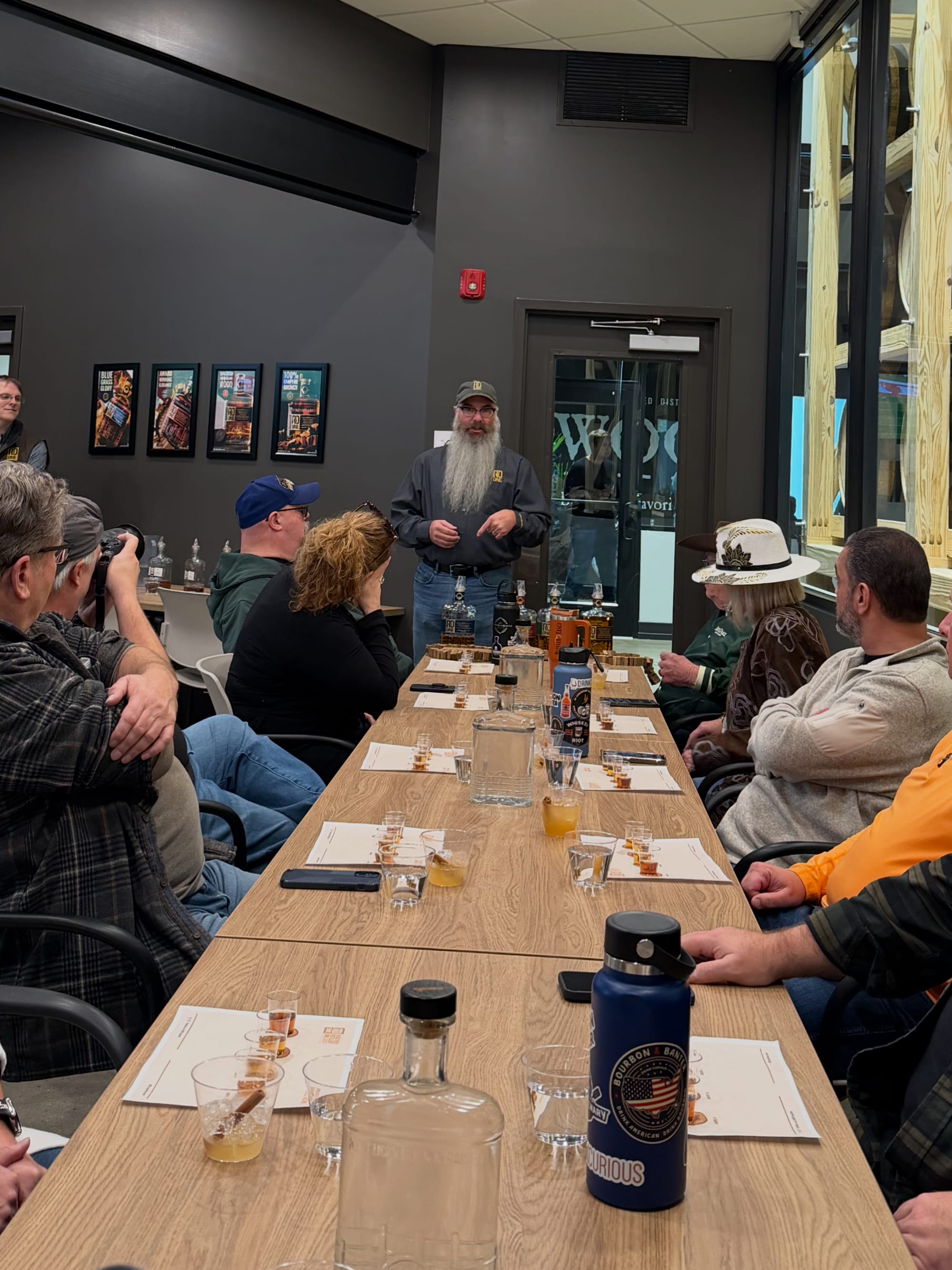
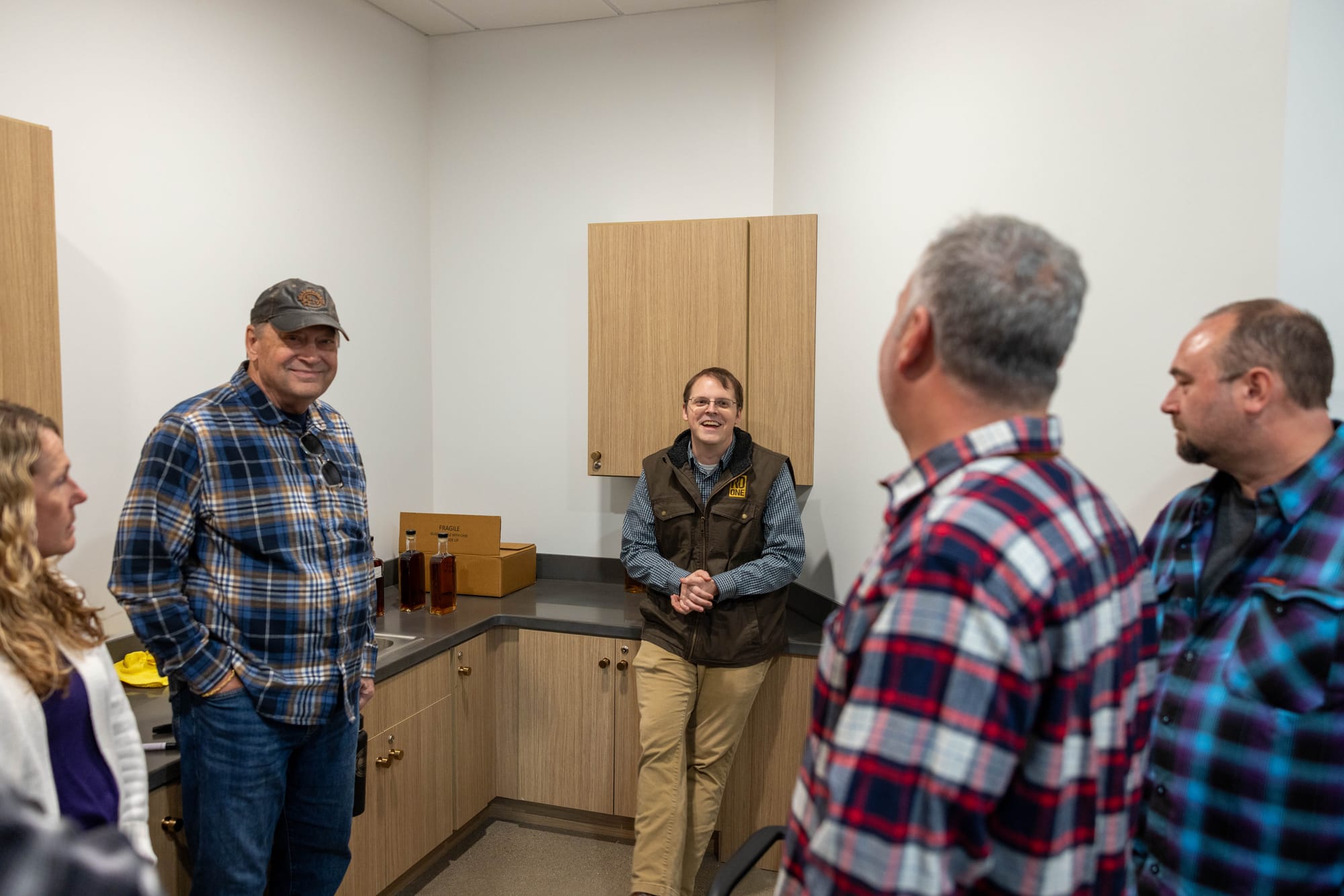

Discovering the magical world of wood finishing at RD1.
A portion of our group filled their own bottles based on favorites they’d tried, while the rest engaged in a blending experience.
We also got to meet Barry Brinegar, RD1’s cofounder, national brand ambassador and always friendly dude. A former medical device salesman, Brinegar got interested in bourbon via the Lexington Bourbon Society and envisioned the creation of the company as a passion project. The brand quickly caught the attention of private investors who’ve helped expand it nationally. Meeting his equally friendly wife, Tori, was a bonus, and another part of the charm that is so common to touring the Kentucky Bourbon Trail.
Special Tour of Glenns Creek Distillery, the Historic Home of Old Crow
The final stop was Glenns Creek Distillery, where owner David Meier led the group through the historic Old Crow Distillery grounds. As mentioned, the people in our group have visited a lot of distilleries, but when so many said this was the most unique tour they’d ever done, that’s saying a lot. So take our word for it, go see this place!
Though whiskey is made here on small pot still, the tour centers on the history of one of America’s most legendary bourbon brands. For decades, the property had been abandoned to the weeds before Meier bought it for $325,000. His vision for it was big—too big, he said—and his dreams have fallen short of his ambitions. The distillery, its bottling hall and three rick rickhouses remain standing, but despite the amazing resurrection of the Old Taylor Distillery as Castle & Key (located just 2 minutes away) it’s likely that these structures, more than a century old, are too far gone. Seeing them firsthand was amazing and haunting.
As we tramped through the aged buildings and across its campus, Meier told story after story, applying his droll sense of humor for effect. Perhaps the best example of this sense of humor was when we discovered his promise of "the most technologically advanced PowerPoint presentation" turned out to be hand-drawn graphs on scraps of cardboard. His entertaining and sarcastic delivery made us wonder how we could get him on our podcast someday.


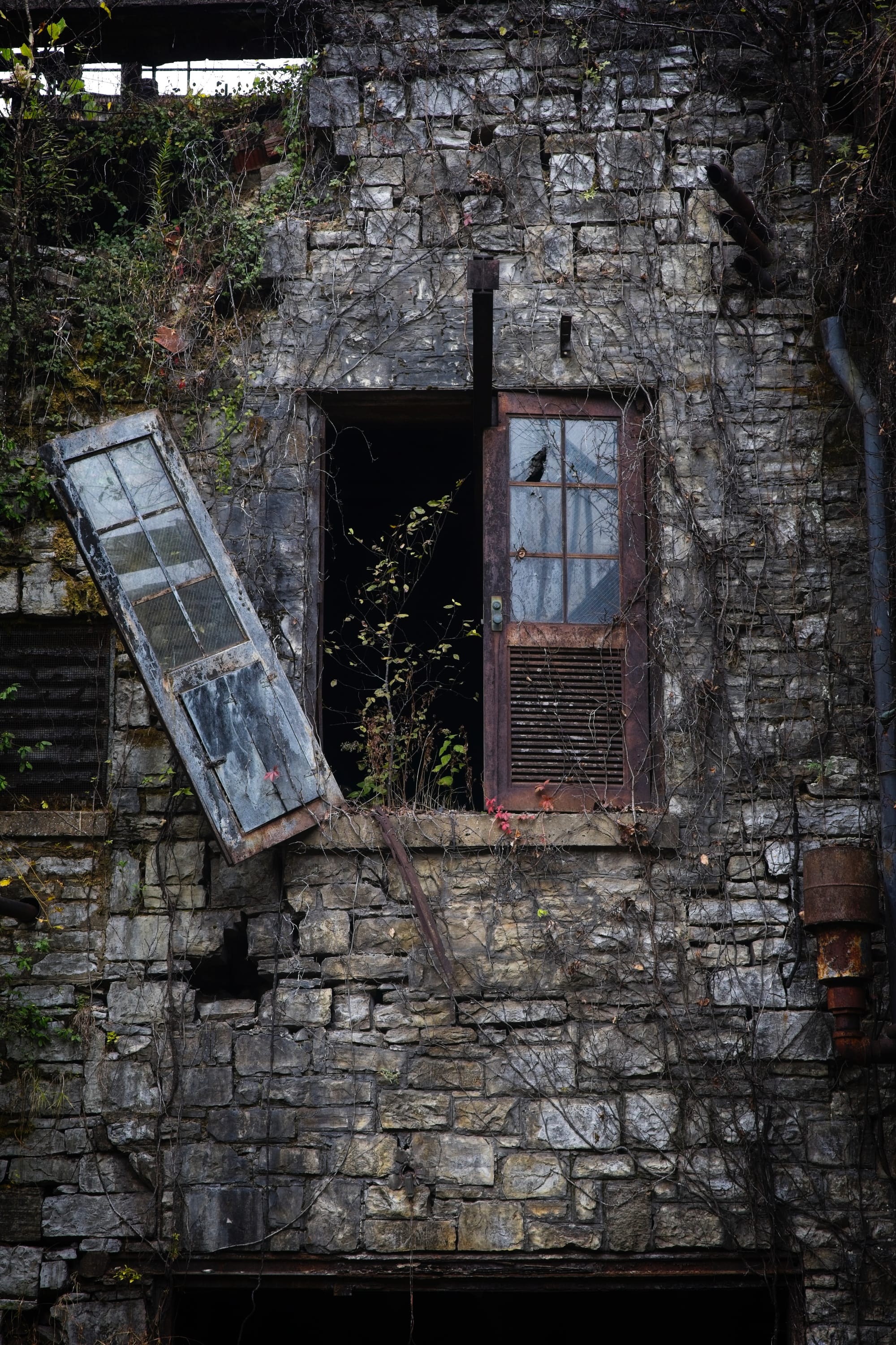



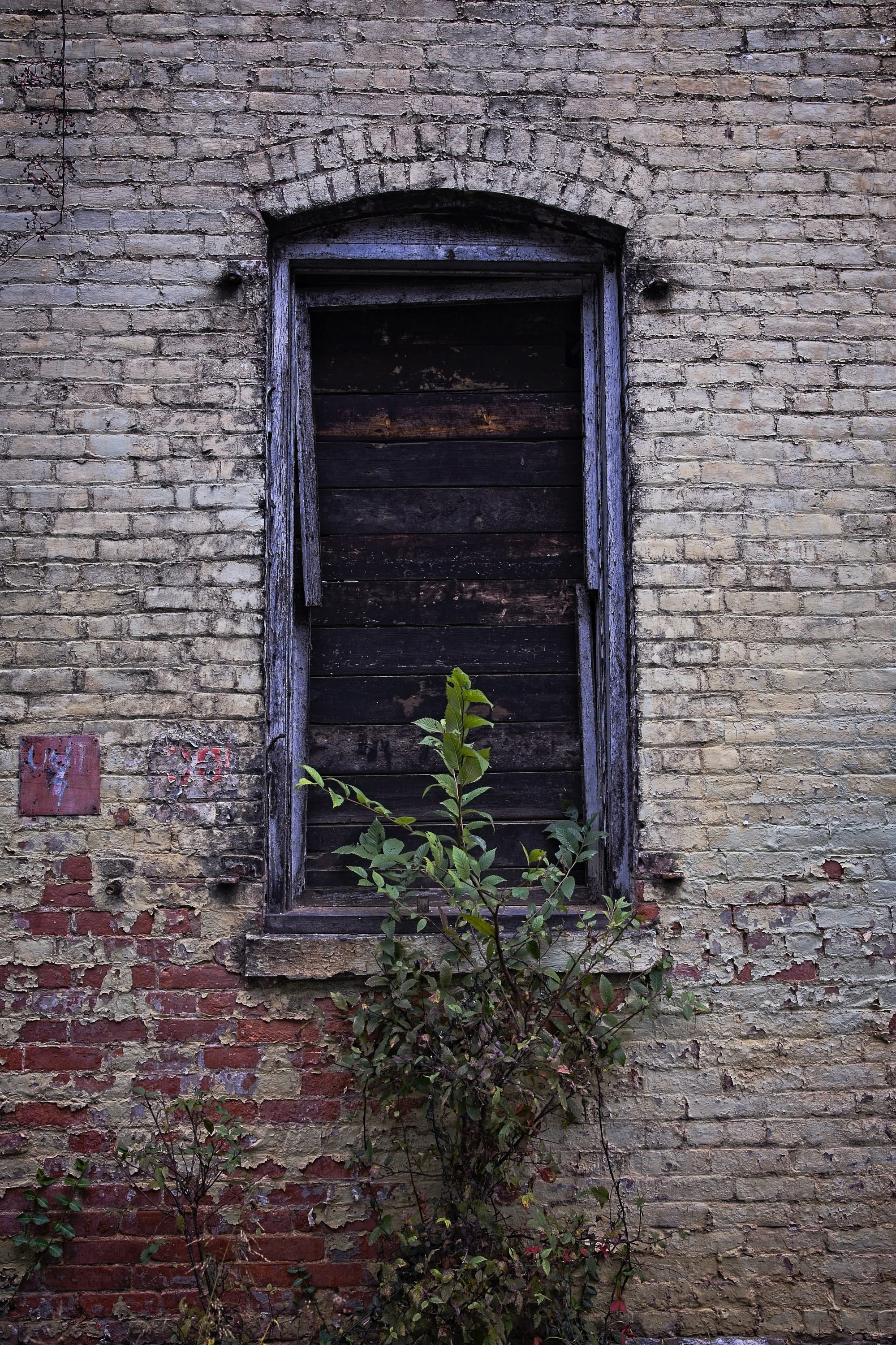

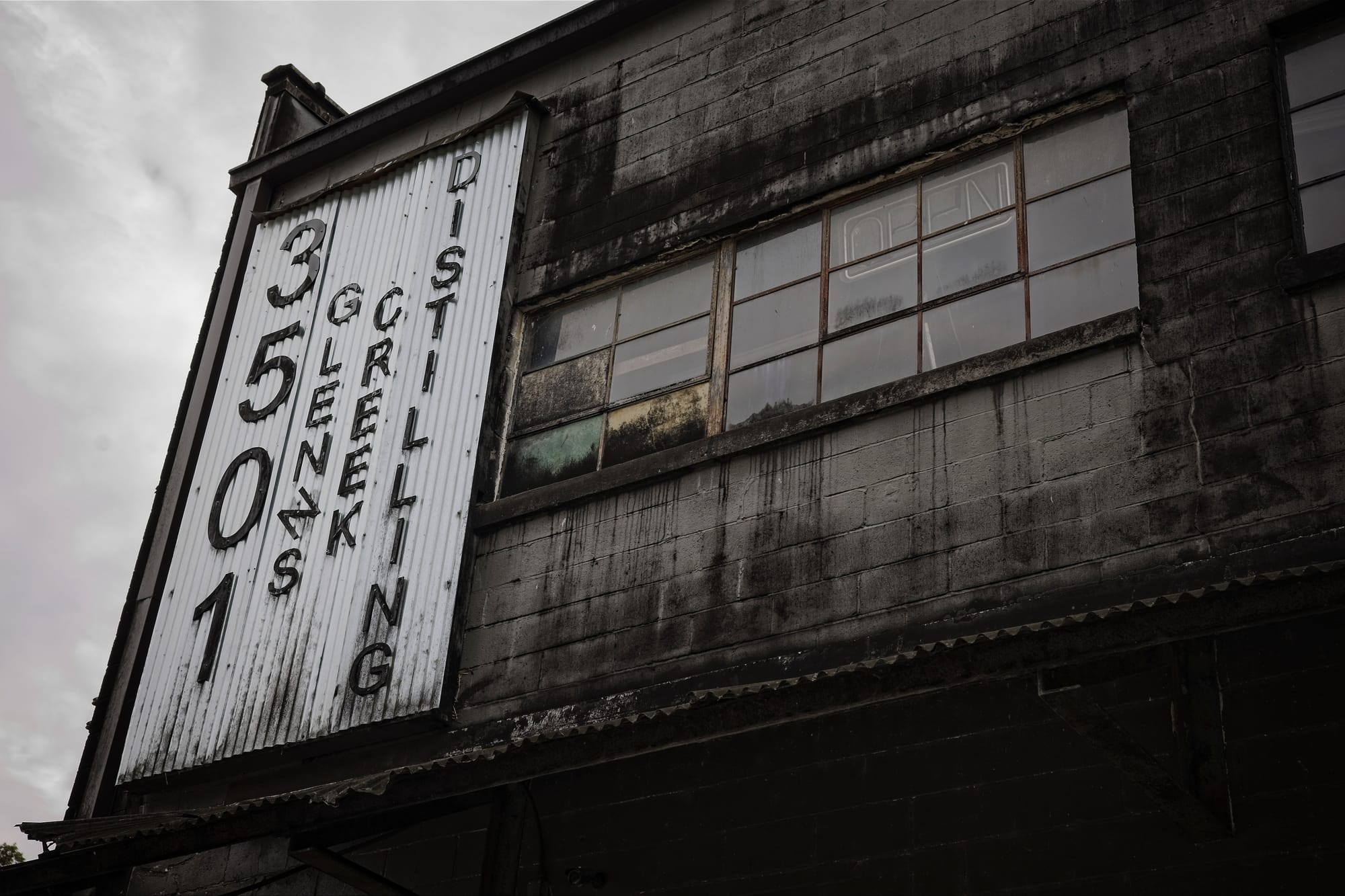
Whiskey. Humor. Decay. Glenns Creek Distillery has it all.
He kindly shared five samples of his pot distilled whiskies with the group—not our favorite of the Summit, but it was made right there, it’s his and its different, and we appreciated that.
Bottom line: If you’re in Kentucky and up for a great tour, sign up for this one well in advance, and be sure to book a walking tour of the grounds.
The Final Bourbon-Soaked Evening
With a long day of tours behind us, we boarded the bus once more to head back to the Summit house for a dinner of coal-fired pizza, scratch Caesar salad and a hot dog taste-off between Vienna Hot Dogs supplied by Dennis Figueroa and King David Hot Dogs supplied by Brent, whose family created that once-famous brand. Based on independent post-dinner polling (certified by accounting firm Dewey Cheatum & Howe), King David hot dogs reigned supreme.
As we do on every Summit Saturday night, we held our annual swag giveaway. Attendees receive several raffle tickets that are drawn at random. When their ticket is chosen, they can choose from a broad array of swag items contributed by various spirits industry companies. Unlike in the past, when the swag was spread out atop a pool table for all to see—and early pickers got to pick the best stuff—this time each item was gift wrapped. That made picking trickier and created lots of laughs.
Soon enough, we retired to a second night of our favored routine: snacking, bottle shares and cigars outside.
The next morning as everyone was getting ready to depart, they couldn't stop talking about how fantastic the event was and how they looked forward to next year's event—not just being bigger, but better and even more enjoyable. It was a fantastic third year for our Summit, and I'm extremely proud of the team for everything they did to pull it together.
If you want a real chance at landing a Summit seat next year, stop lurking and join the community. Tickets for the Oct. 23 weekend go on sale this spring, and they won’t last. Don’t say we didn’t warn you.